In midst of the centre of Buenos Aires, high above the infinite tree line that serves as the organic lungs of the city, lives the publisher and art collector Dudu von Thielmann. This German lady has connected her two apartments with a small adjoining door through the balcony. The sun shines softly onto the many artworks, sculptures, and objects that seem to feel at home within Dudu’s private kingdom. They are her treasures and souvenirs from travels and temporary homes she has lived in all over the world.
Dudu’s apartment appears as a perfect amalgamation of anthropology and contemporary art. Upon entering her home, it is hard to decide where to look. However, upon second inspection, one realises how everything has been organised and decorated with great care. A particular order reigns over this seemingly chaotic cosmopolitan collection.
Not only when one’s eye begins to wander, but also in conversation with Dudu, it becomes obvious that her life has been spent surrounded by art and books. Her everyday life has become inseparable with contemporary art, and her passion for books has directly transformed into a career upon founding the publishing company, Ediciones Larivière, with business partner Jean Louis. Thanks to her fresh spirit and inexhaustible energy, her company is known beyond the borders of her hometown. After many years spent globetrotting, this publisher has discovered her base in the Argentinian capital. While telling stories of her adventurous and turbulent journeys through countries such as Iran and Turkey, her radiant enthusiasm and passion shines through.
This portrait is part of our ongoing collaboration with ZEIT Online who present a special curation of our pictures on their site.
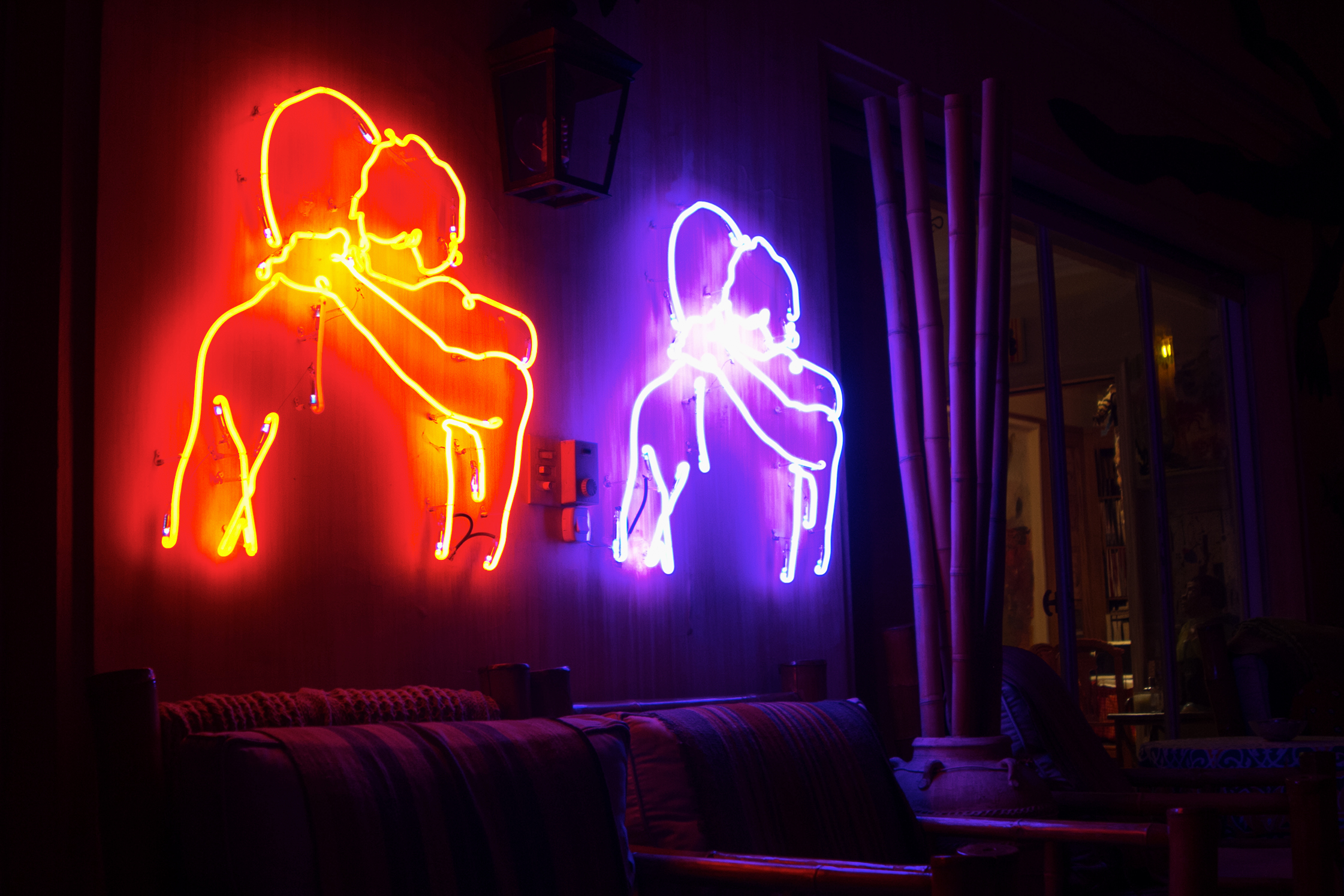
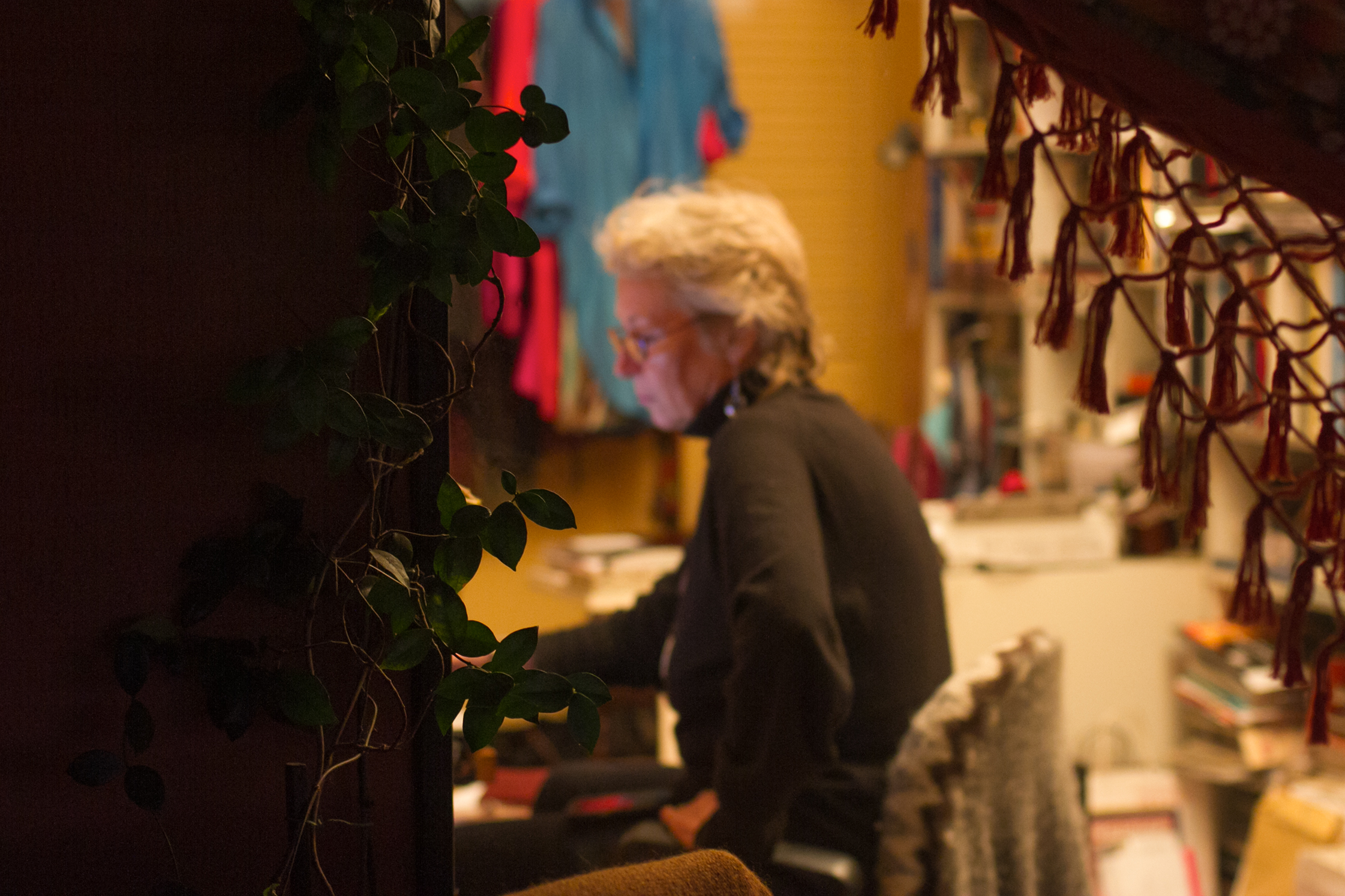
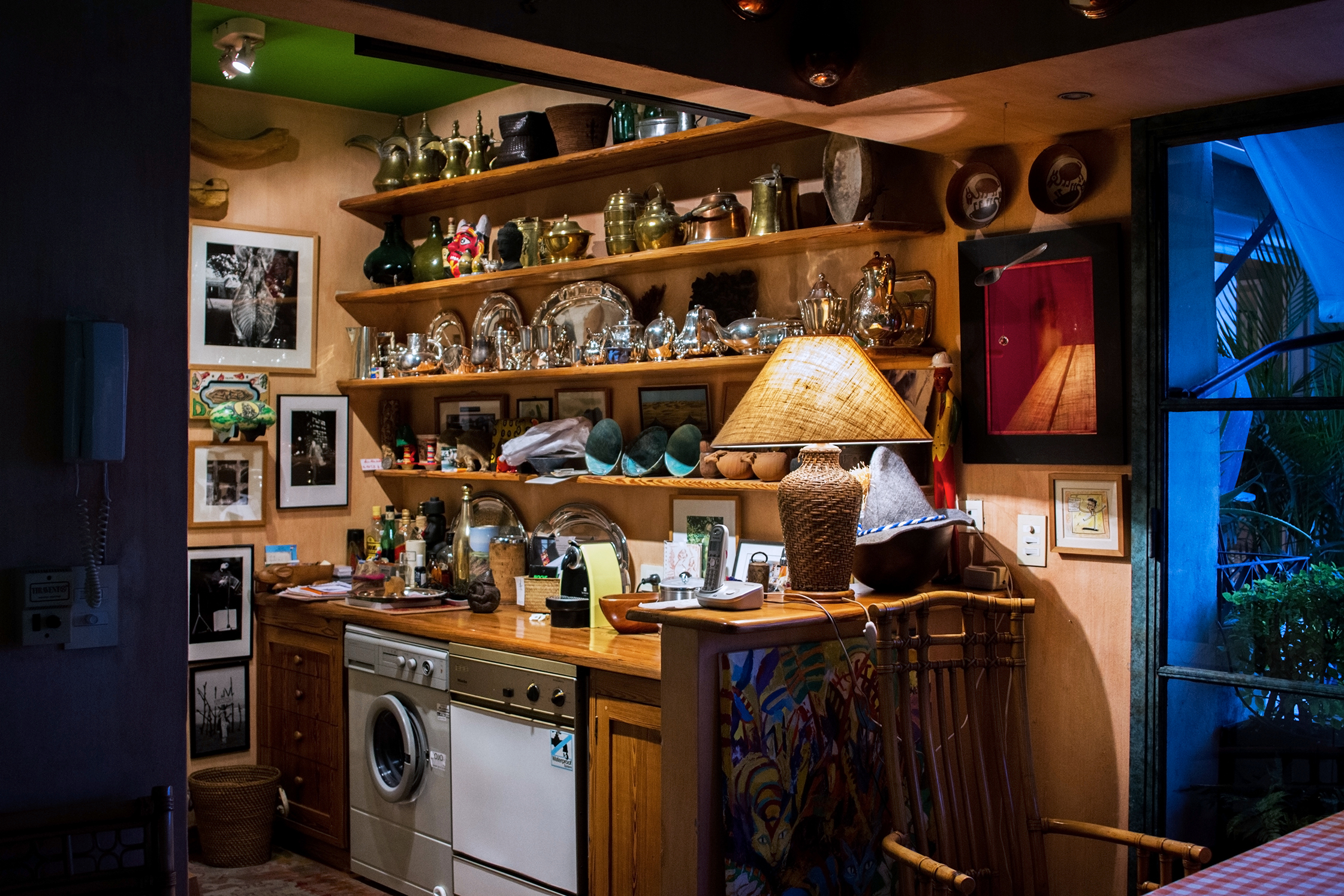
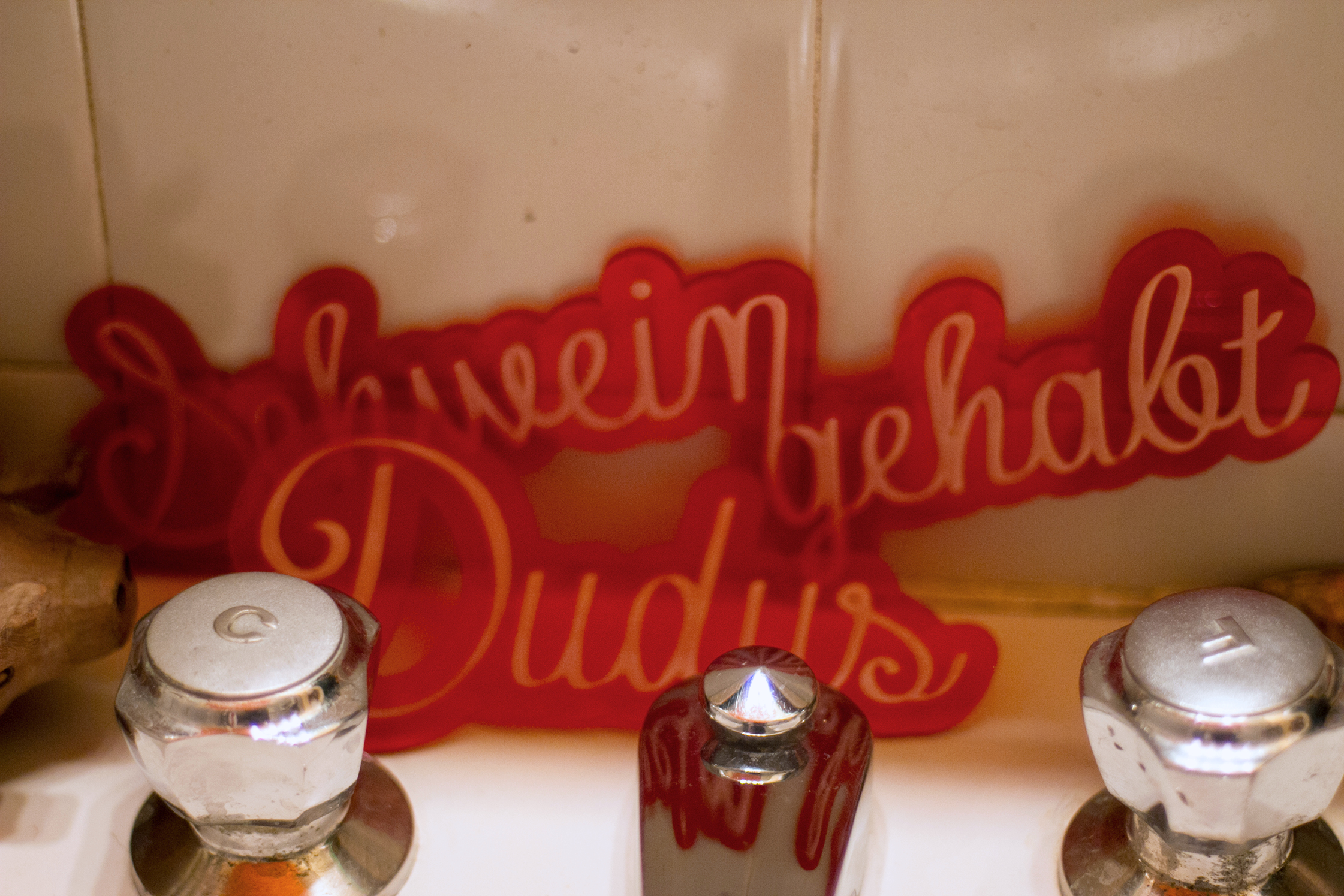
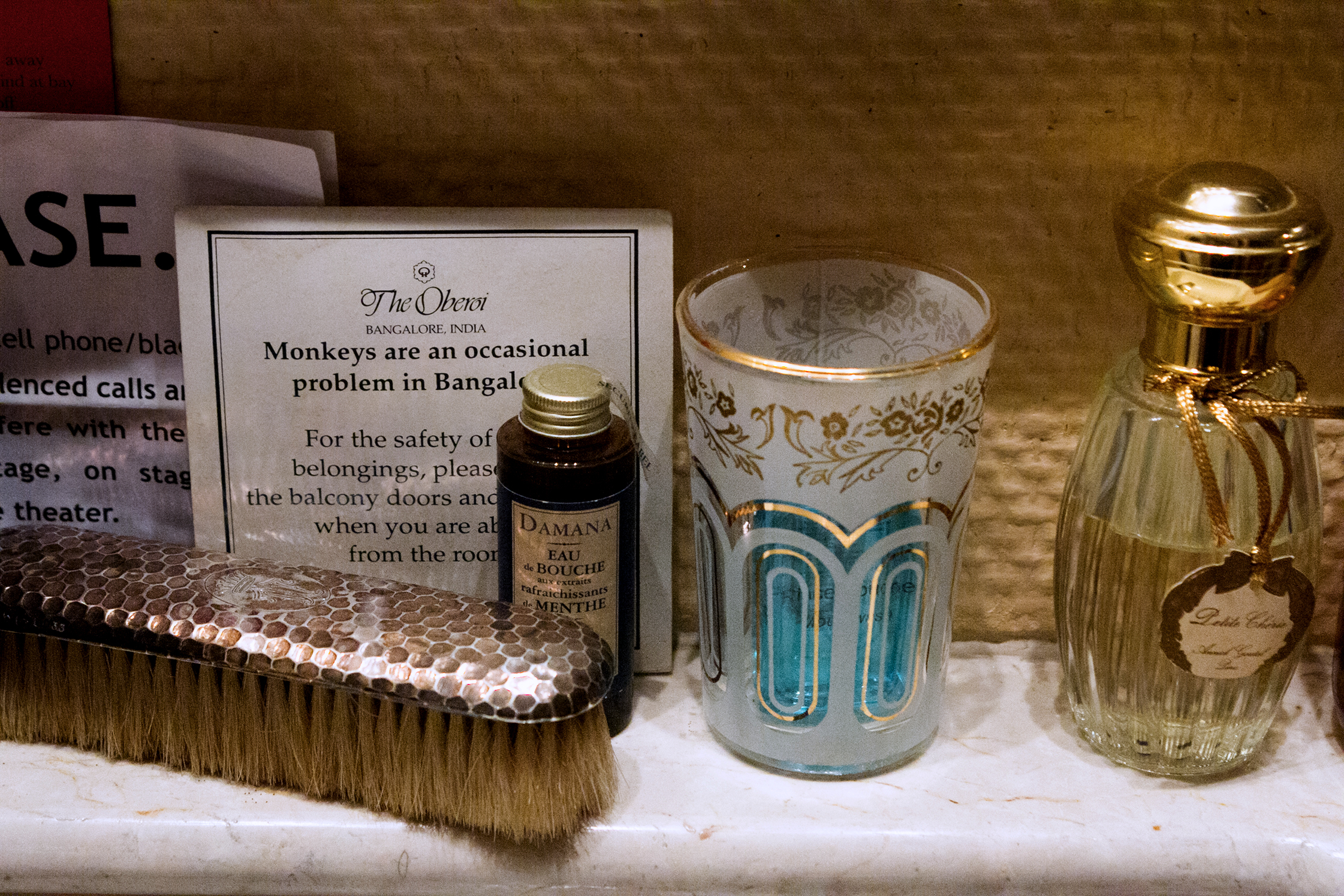
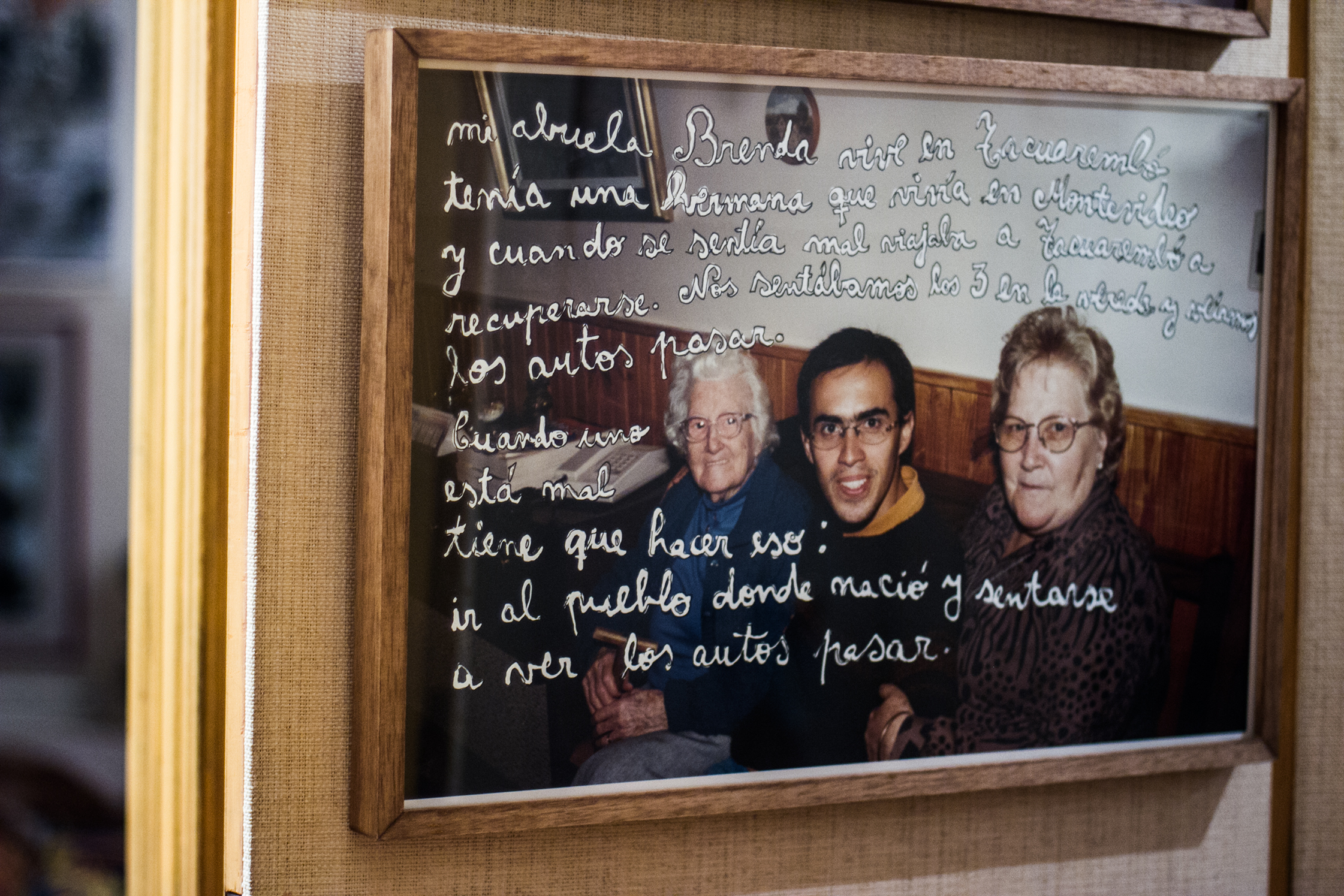
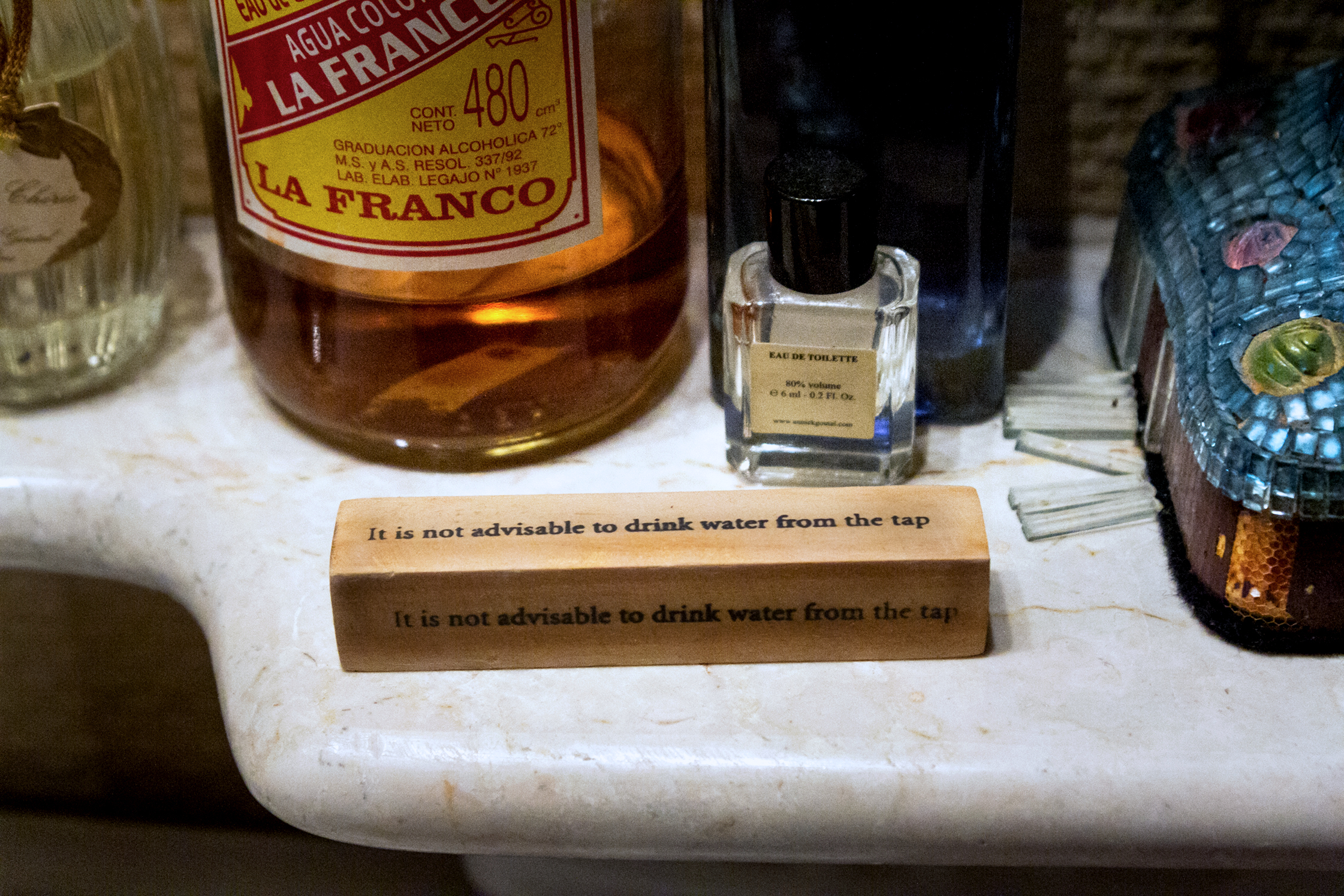
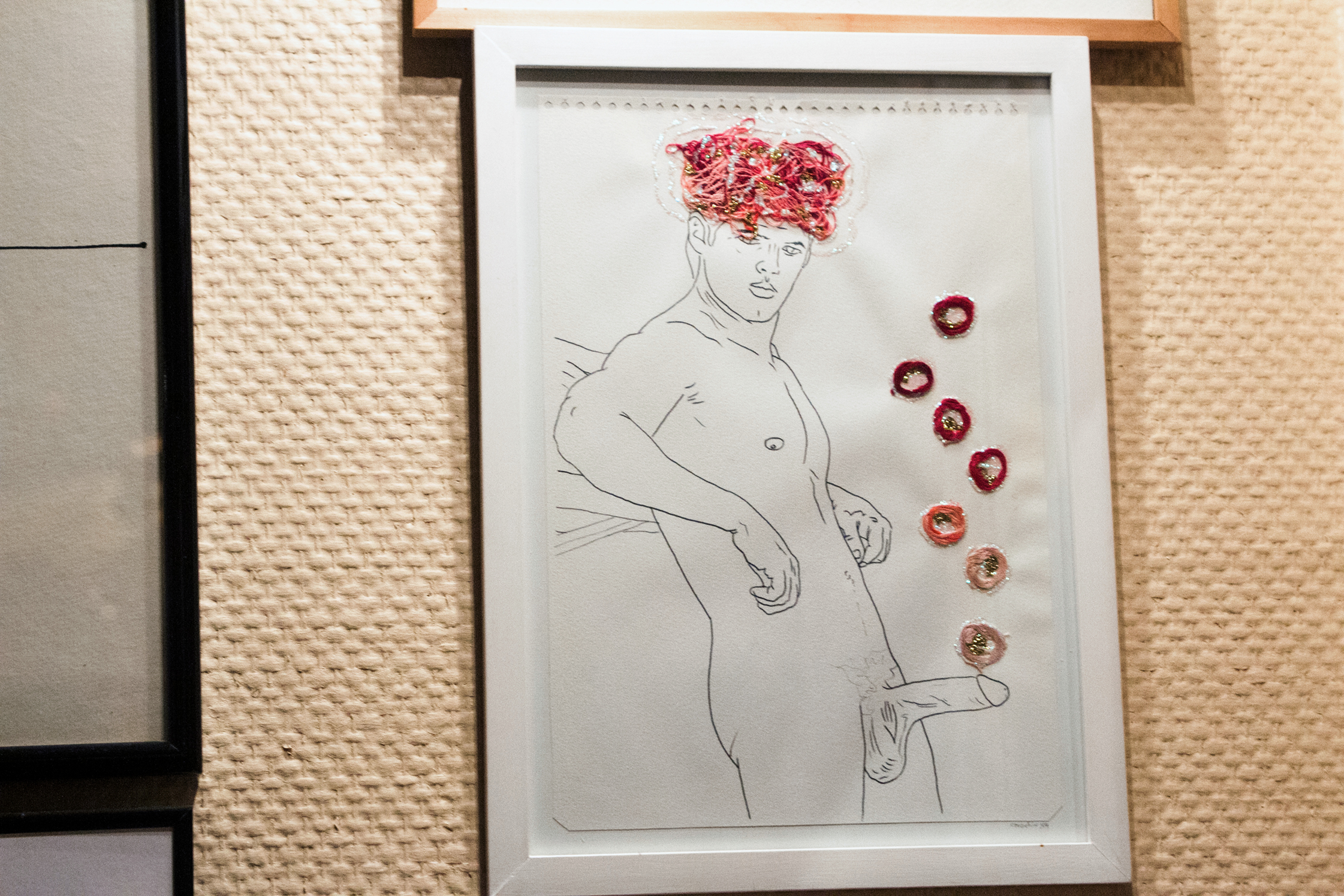
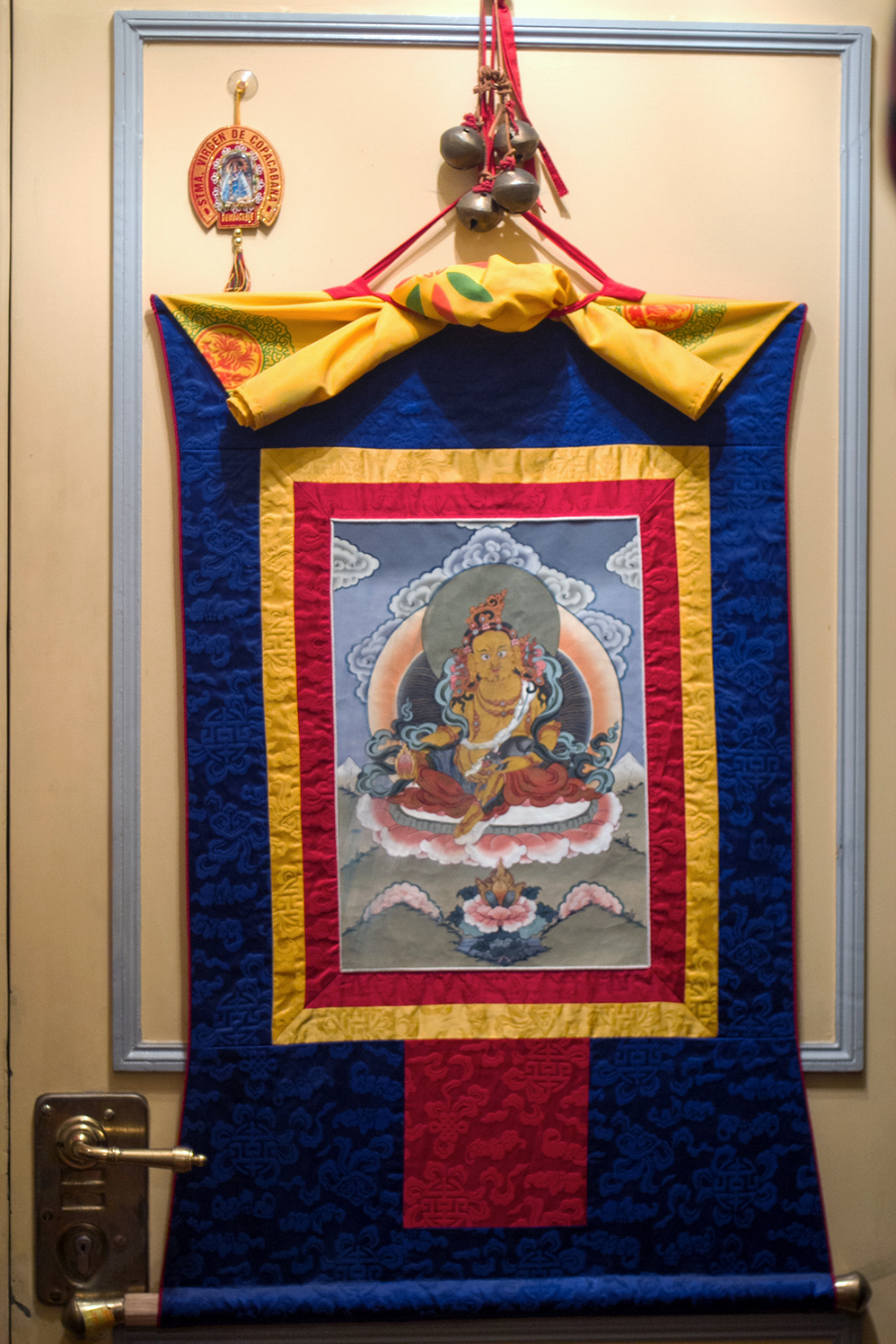
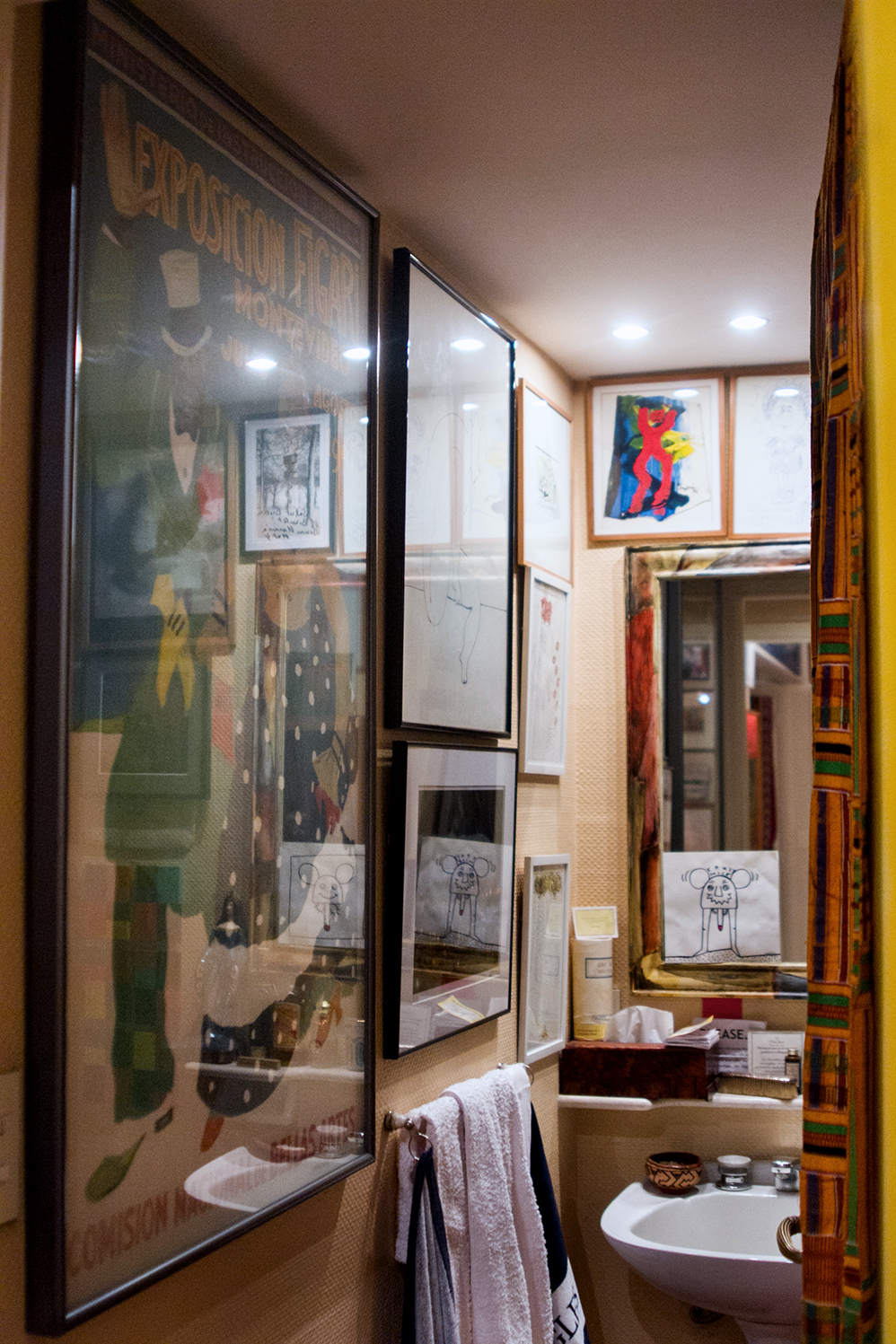
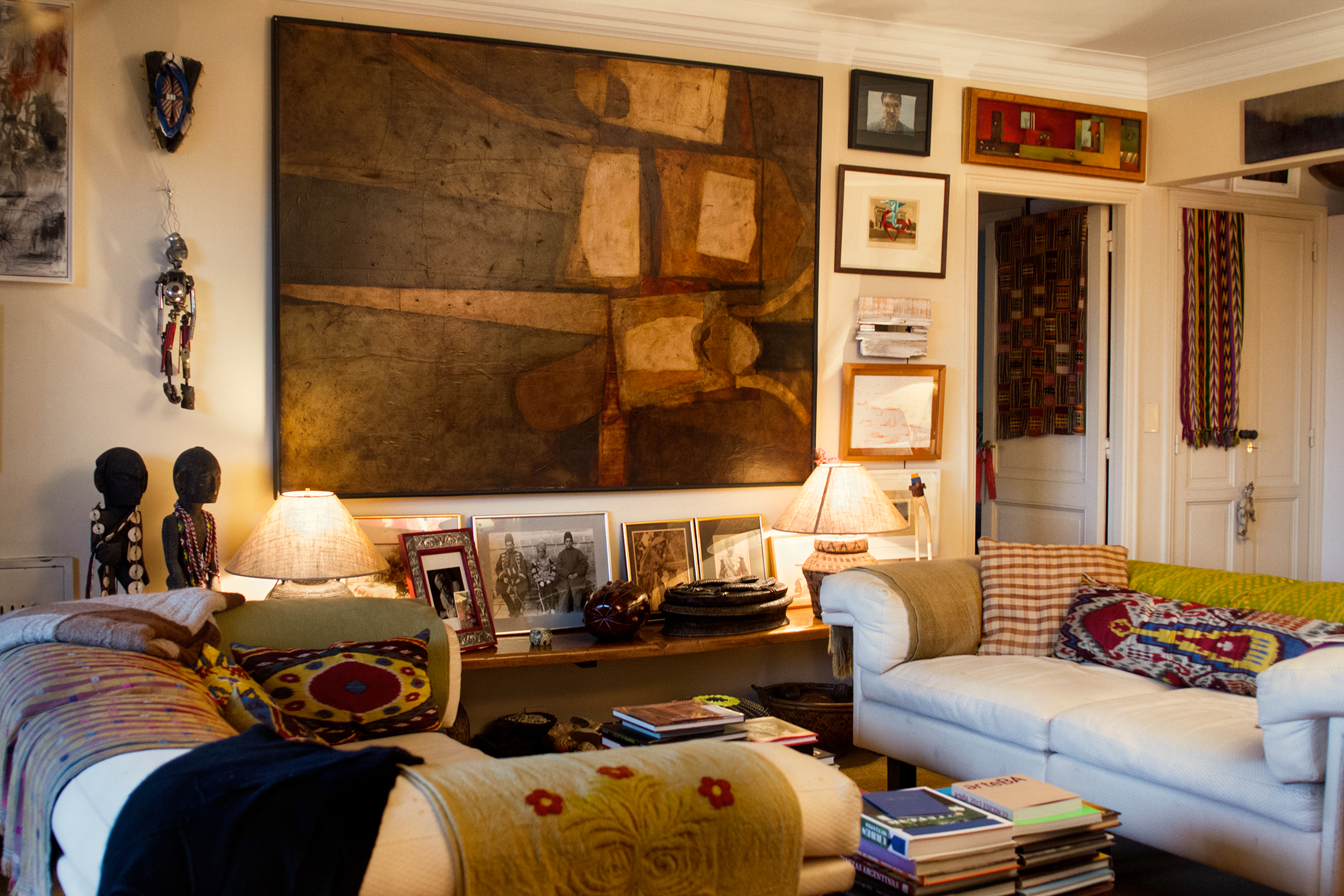
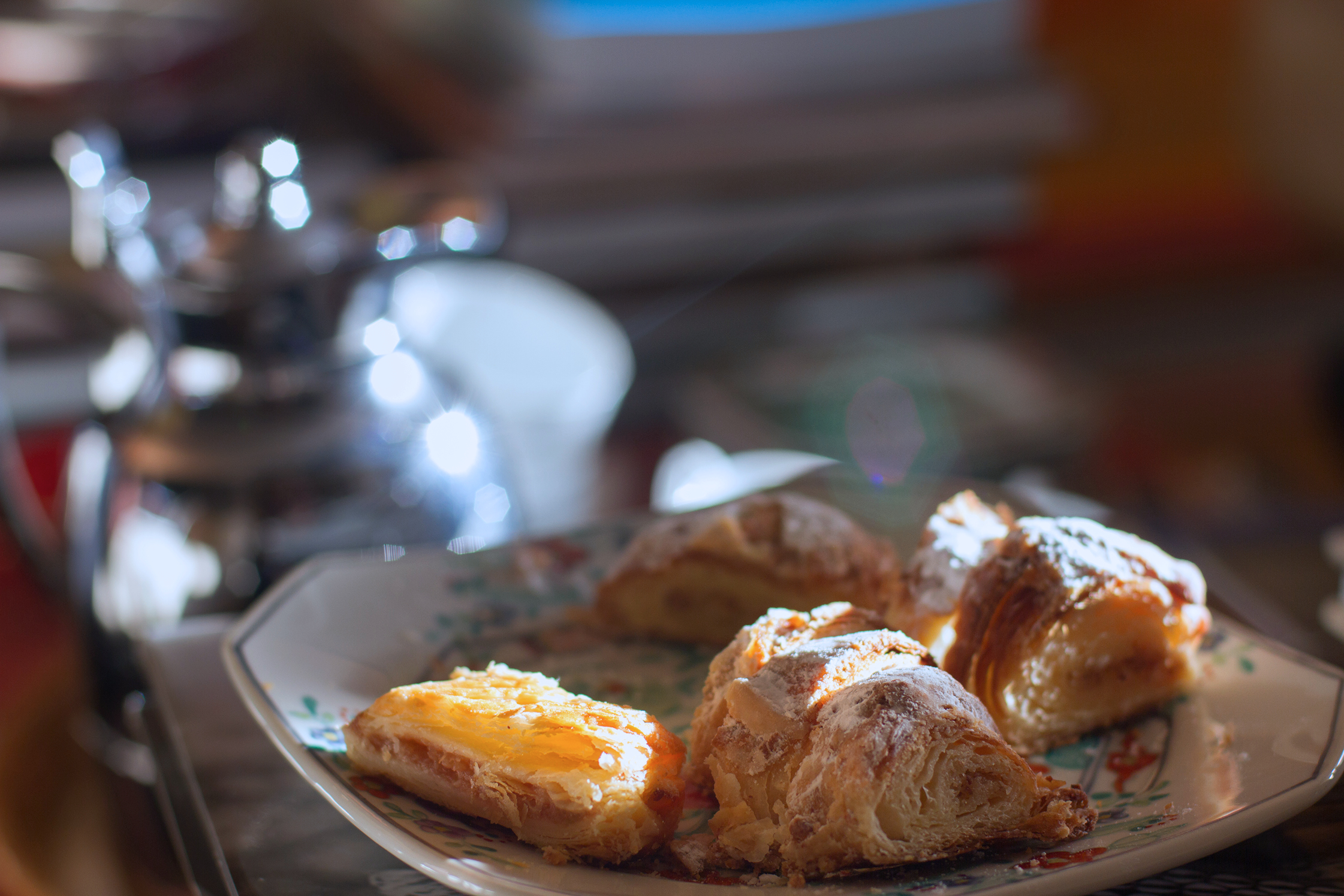
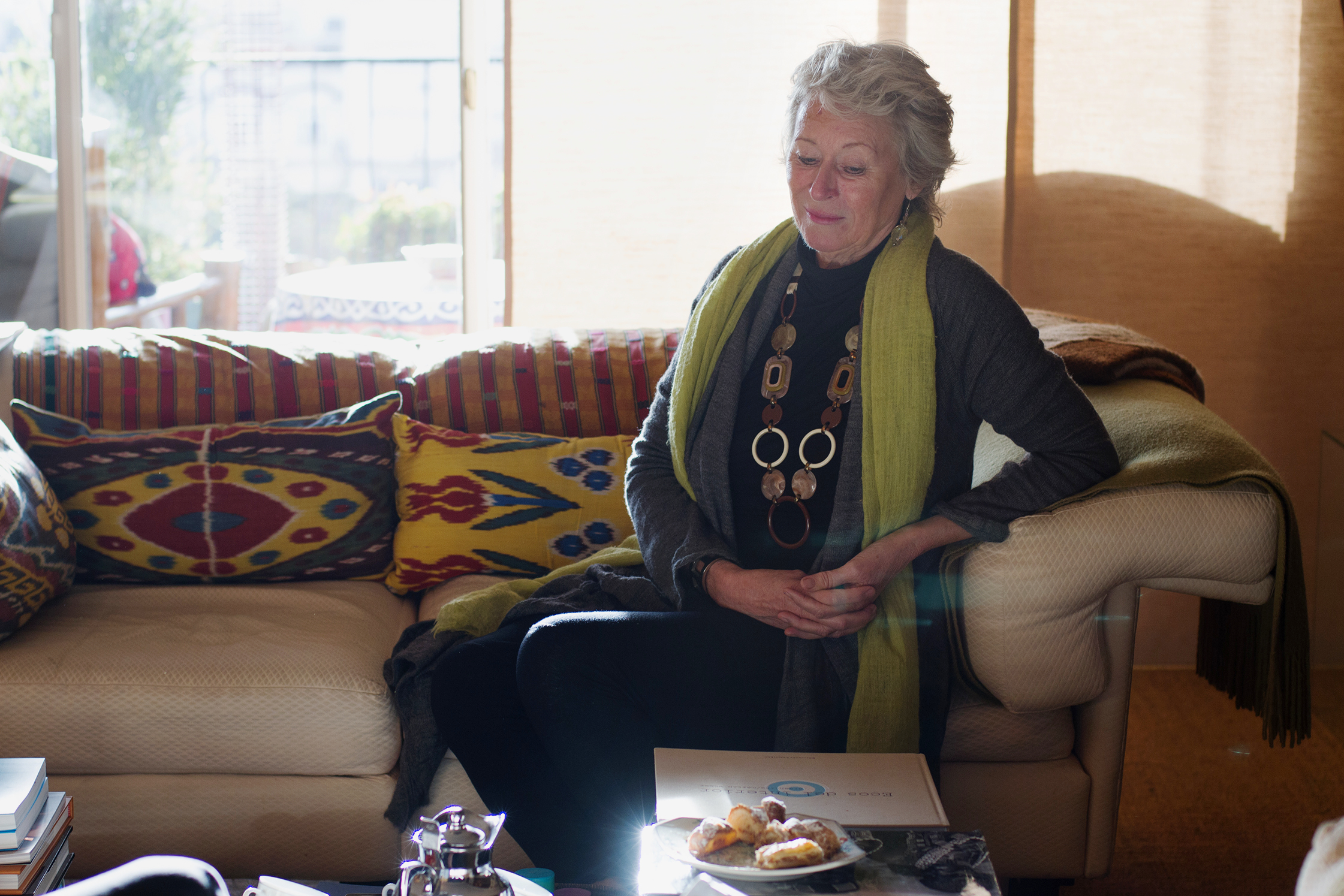
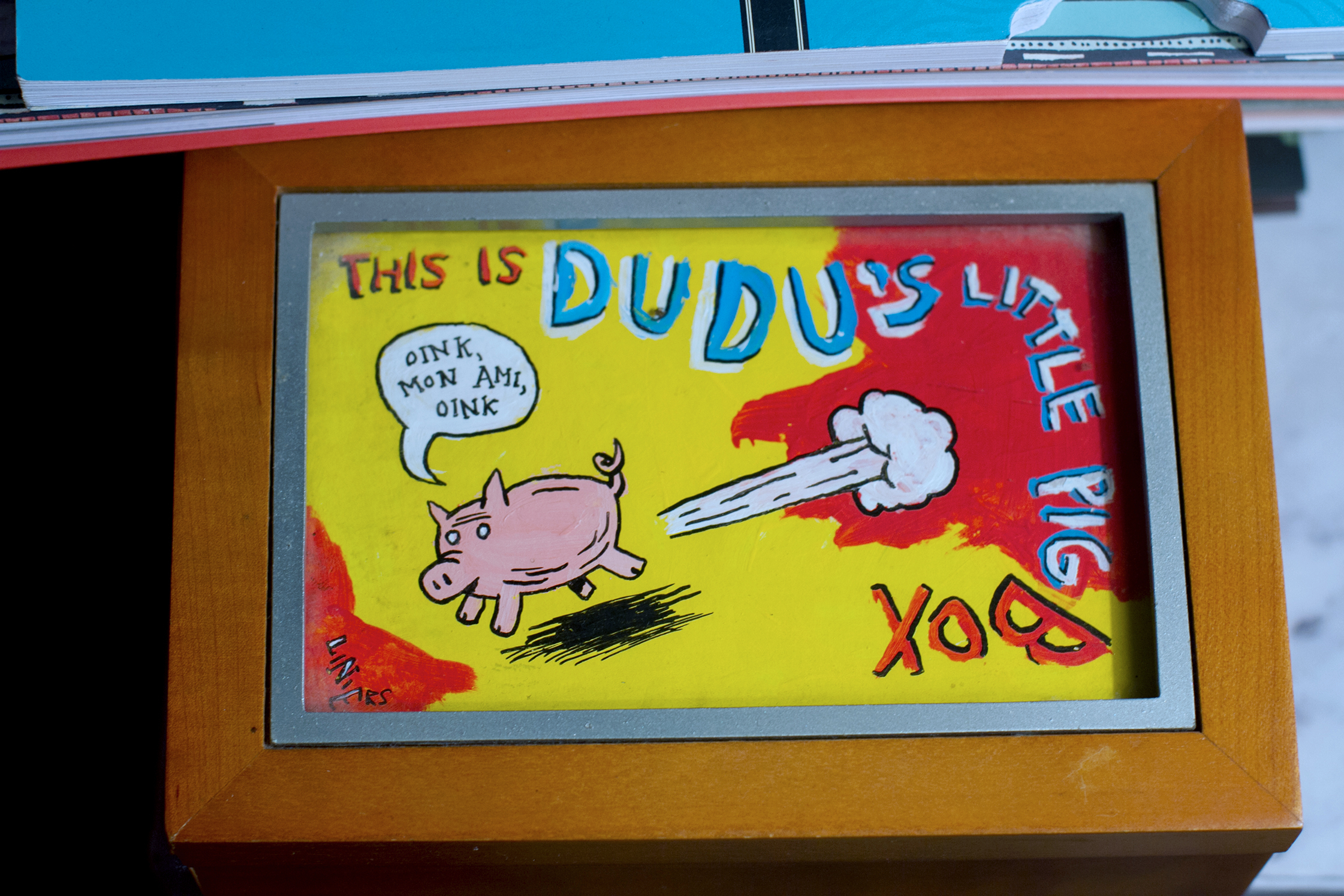
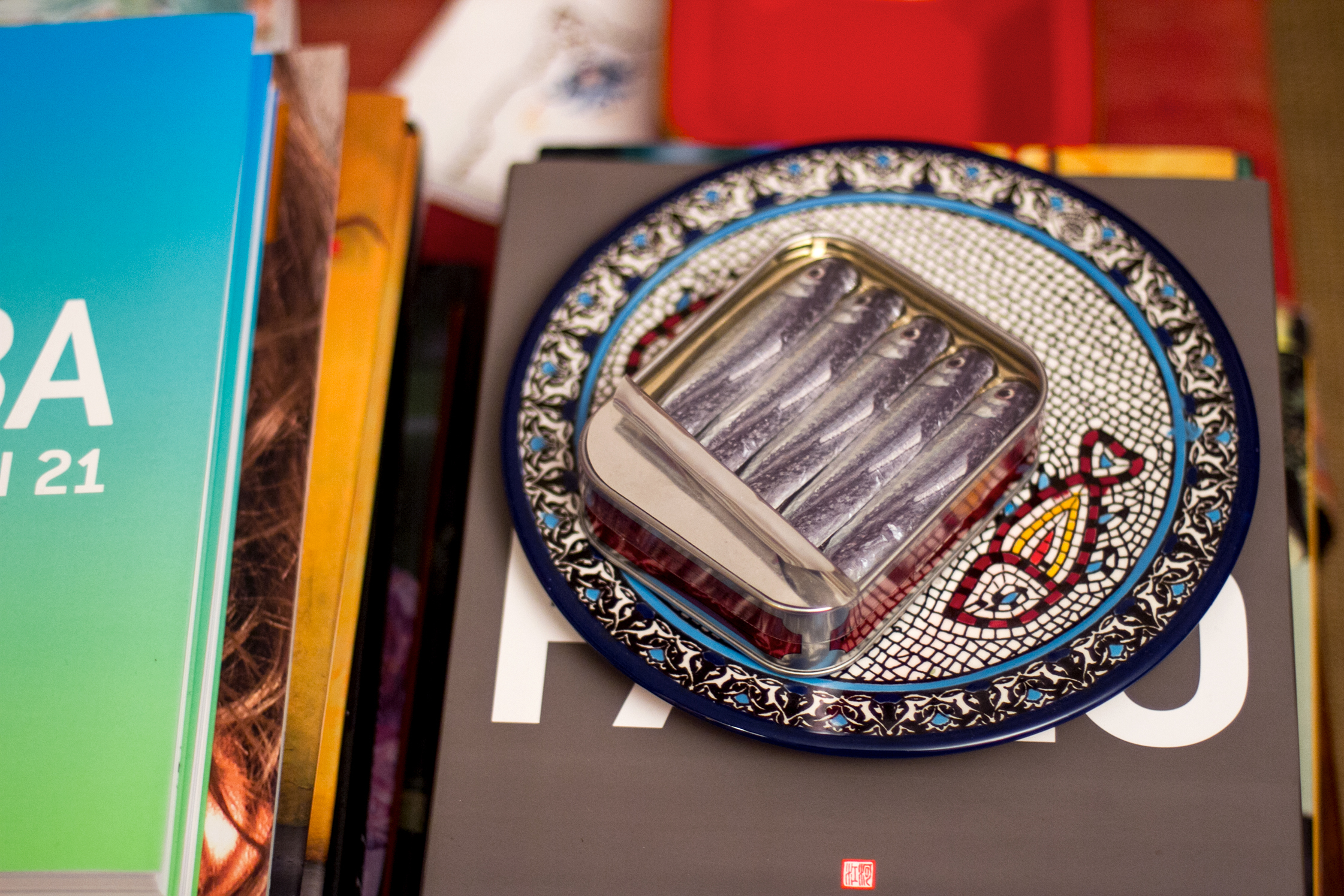
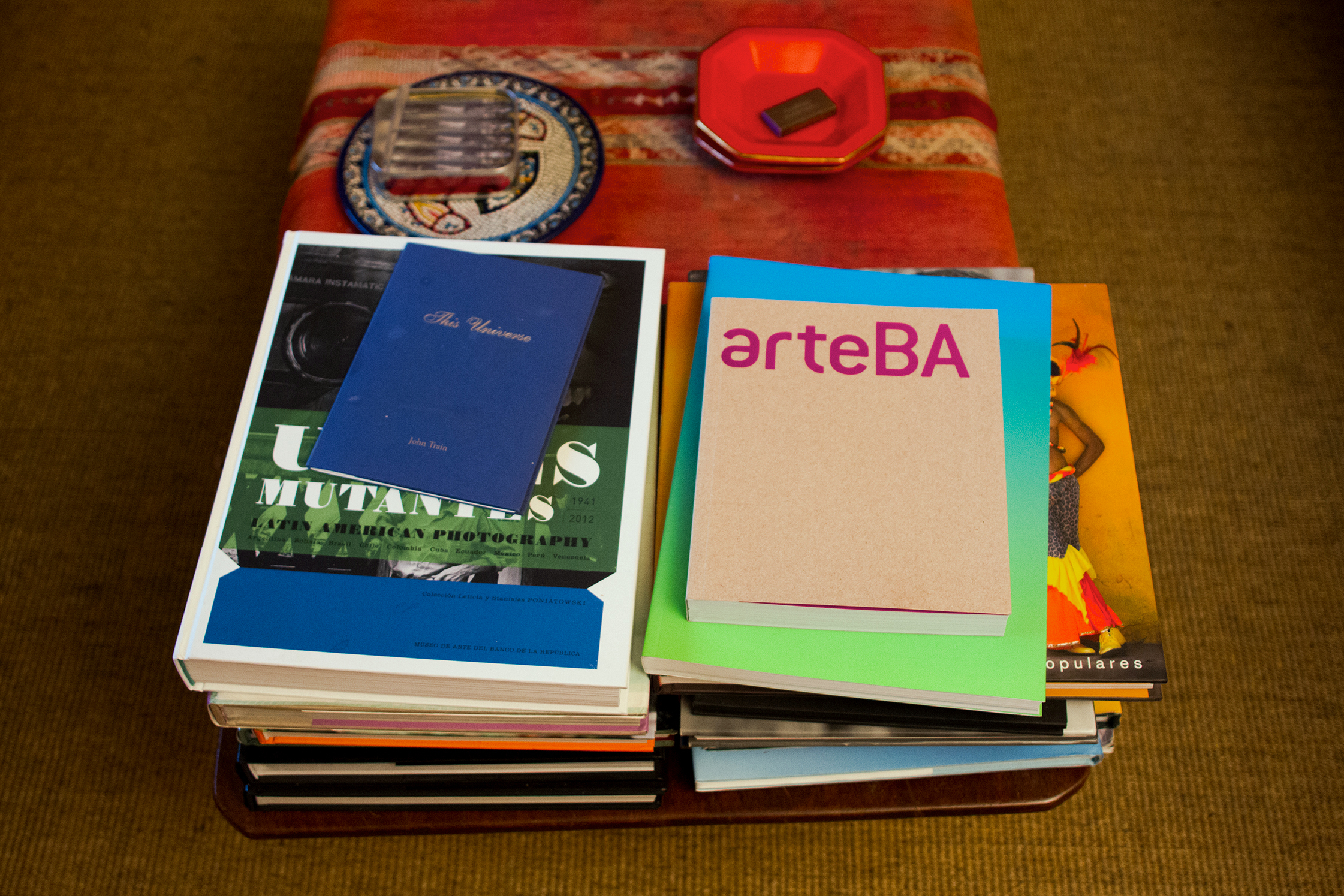
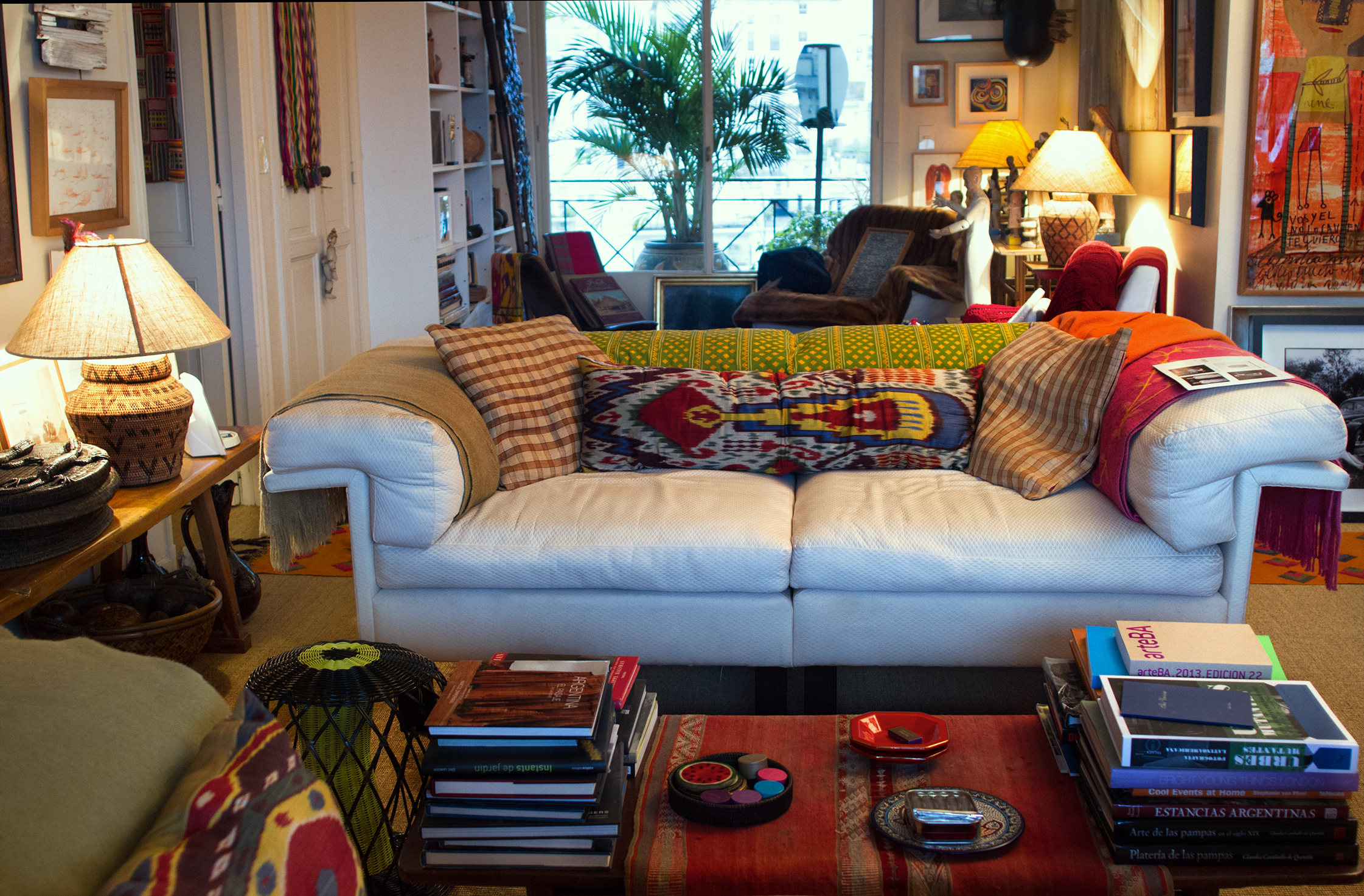
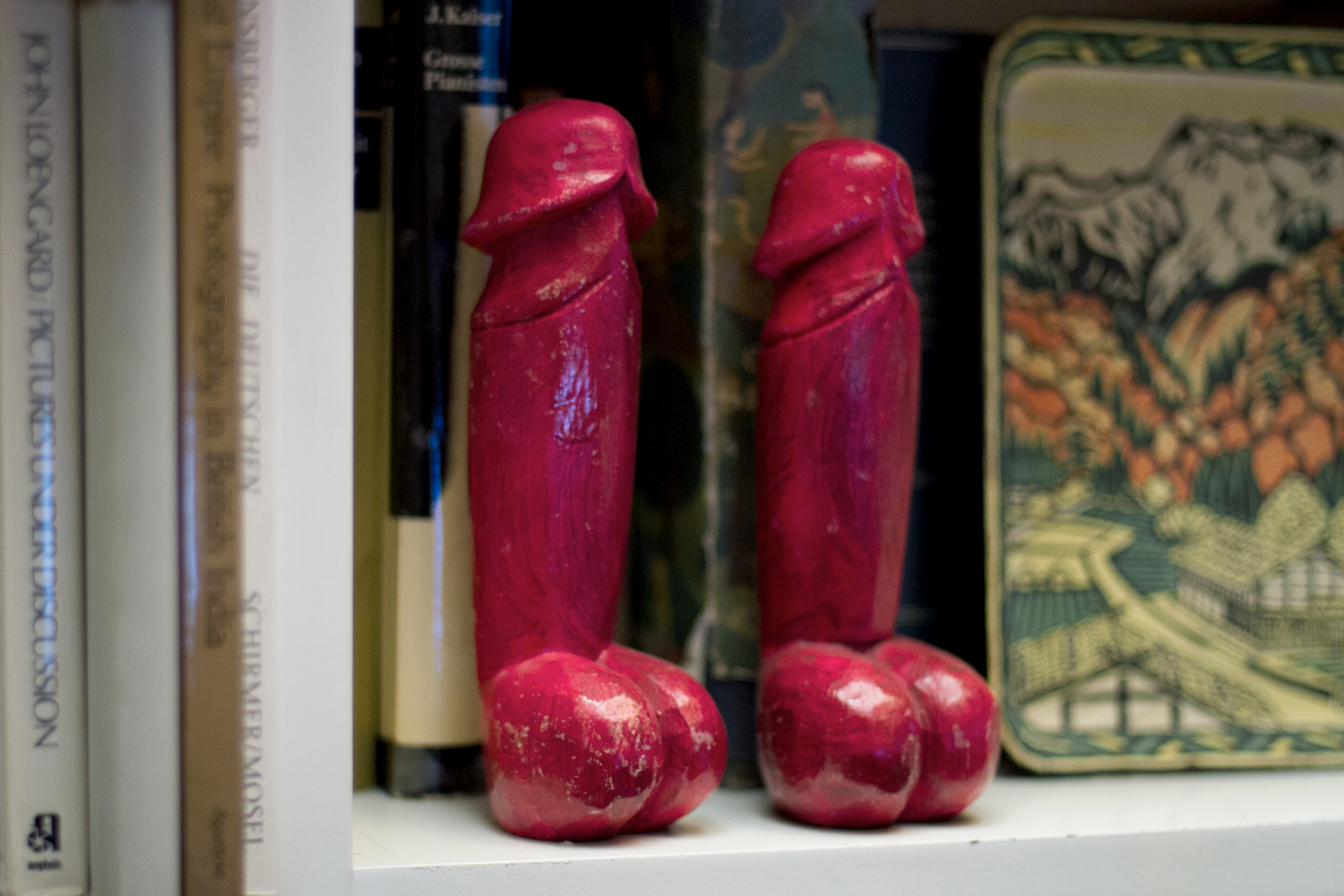
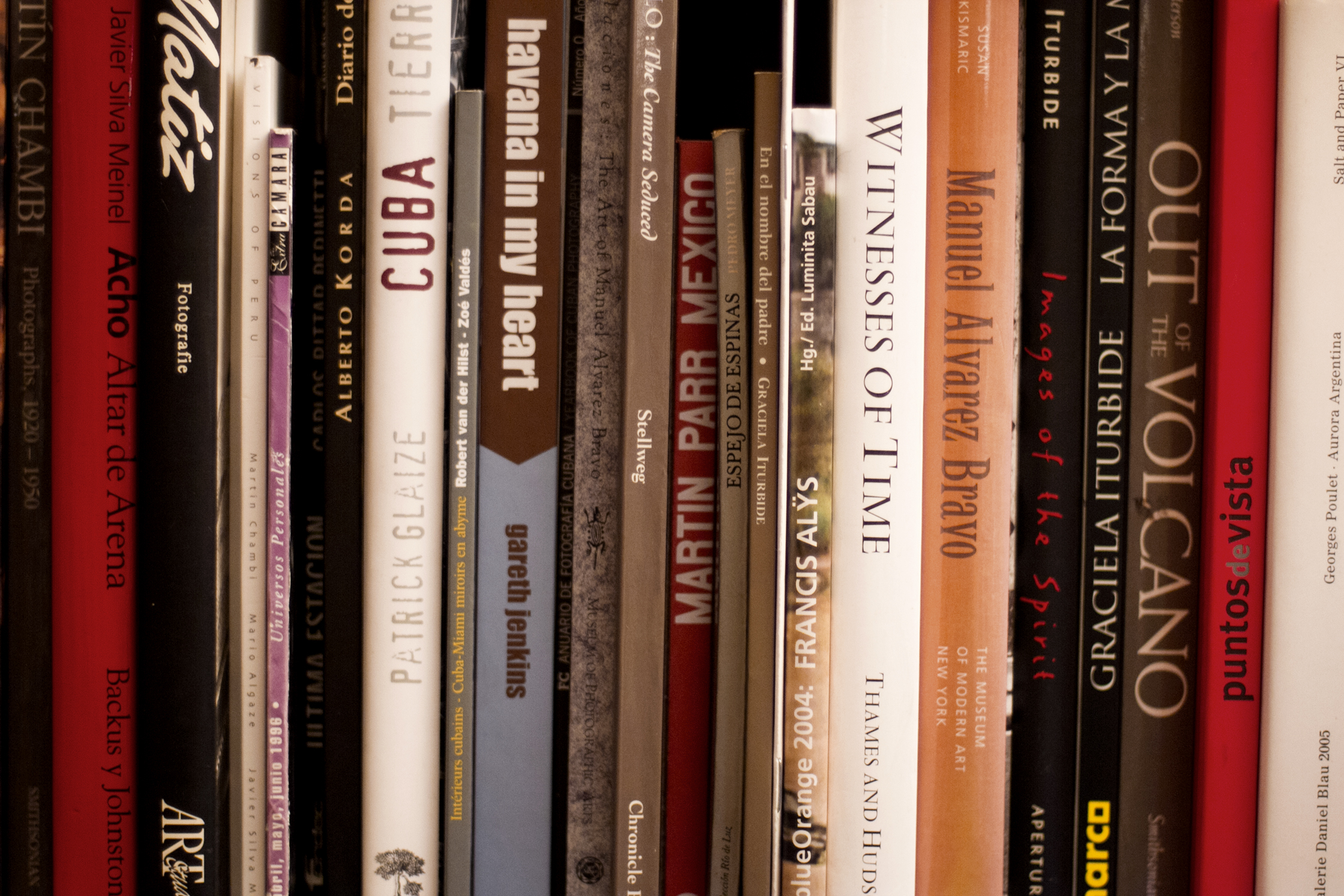
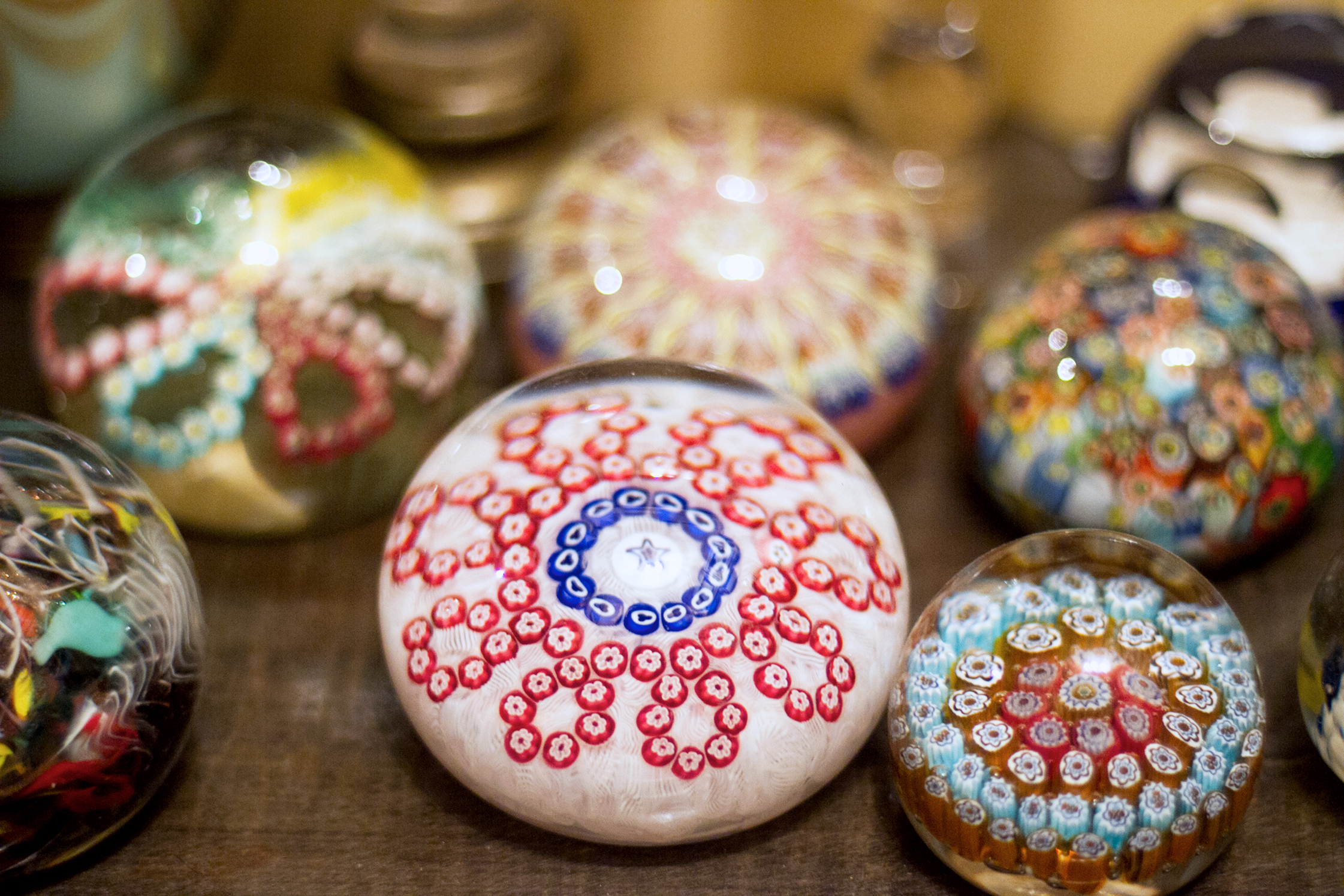
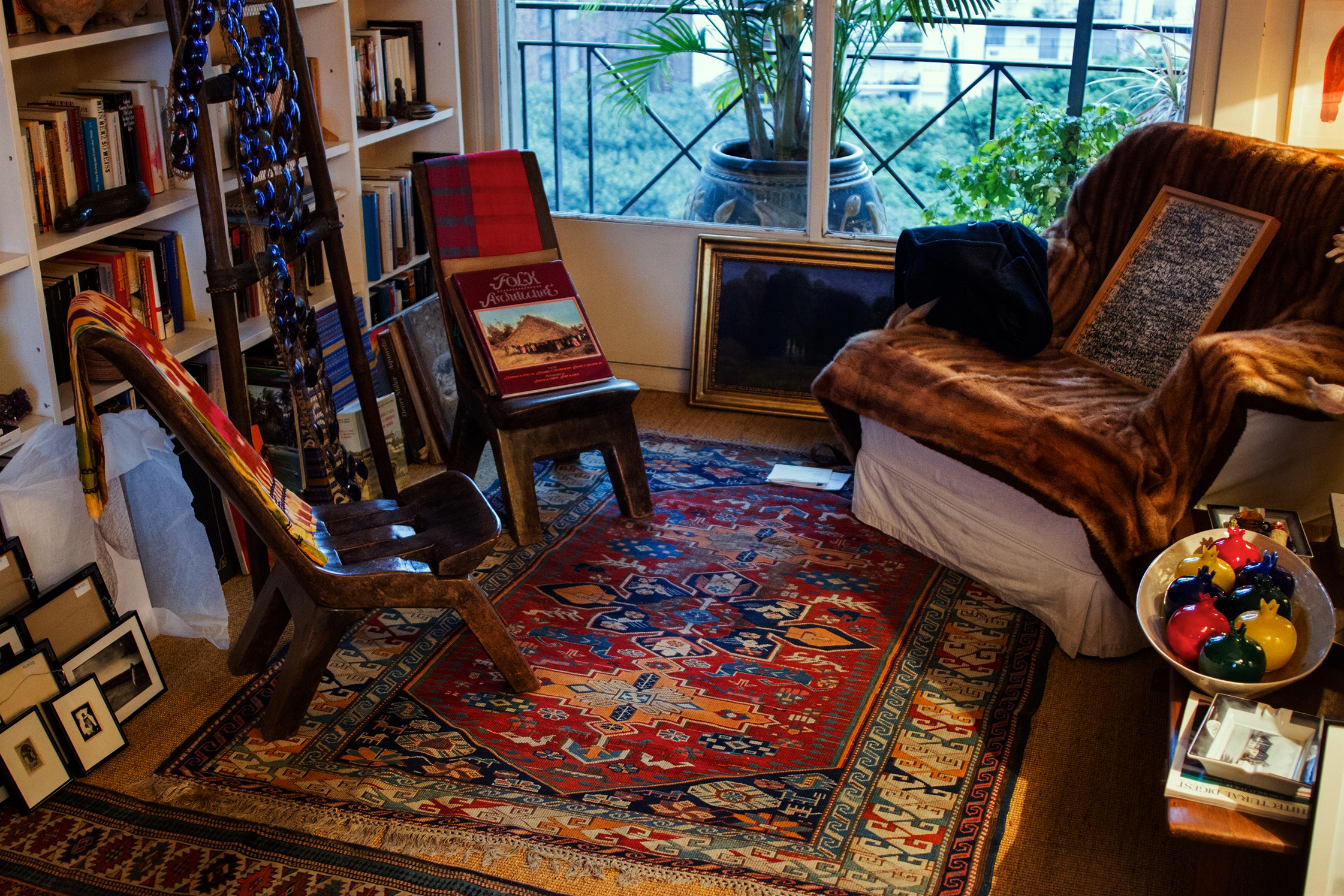
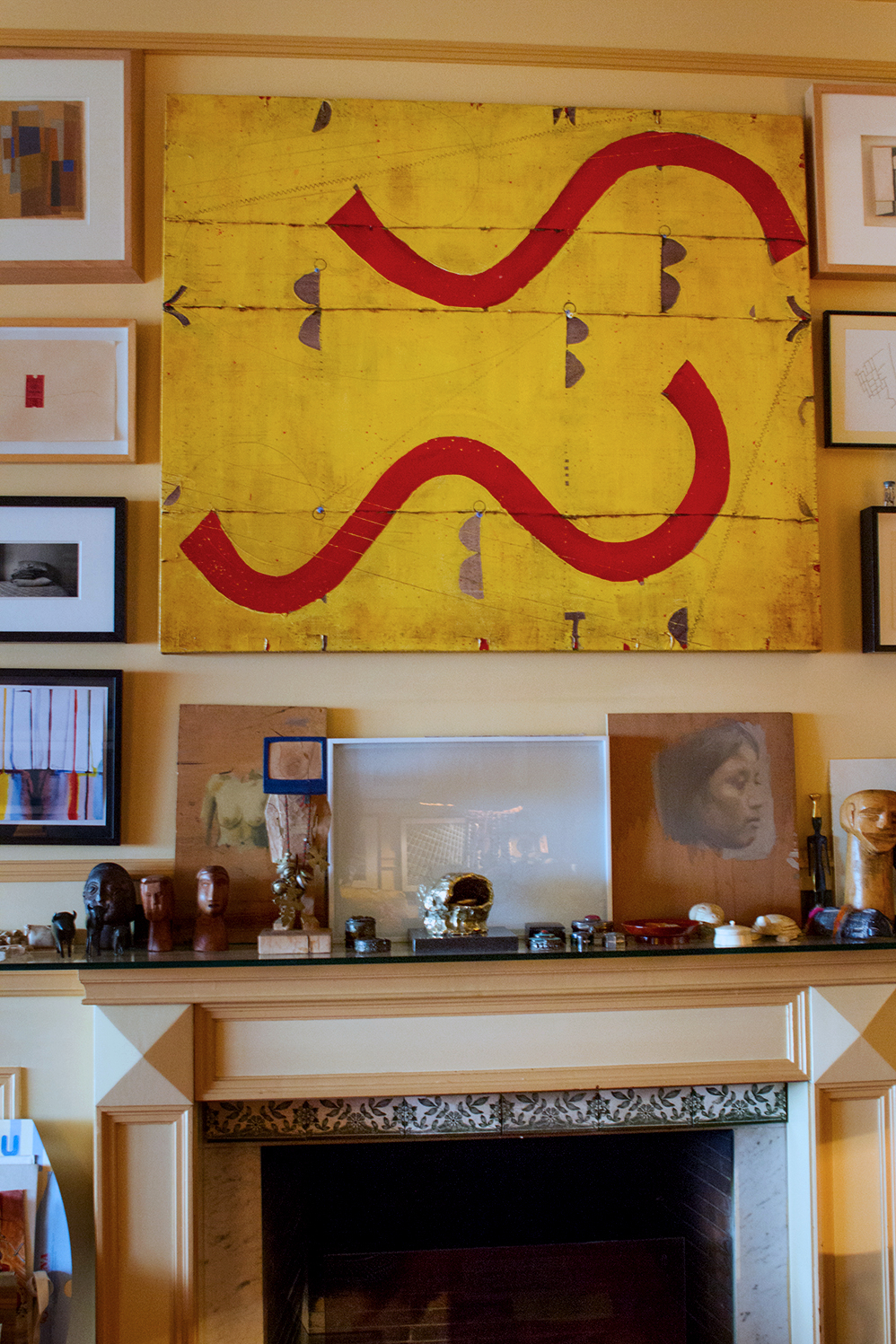
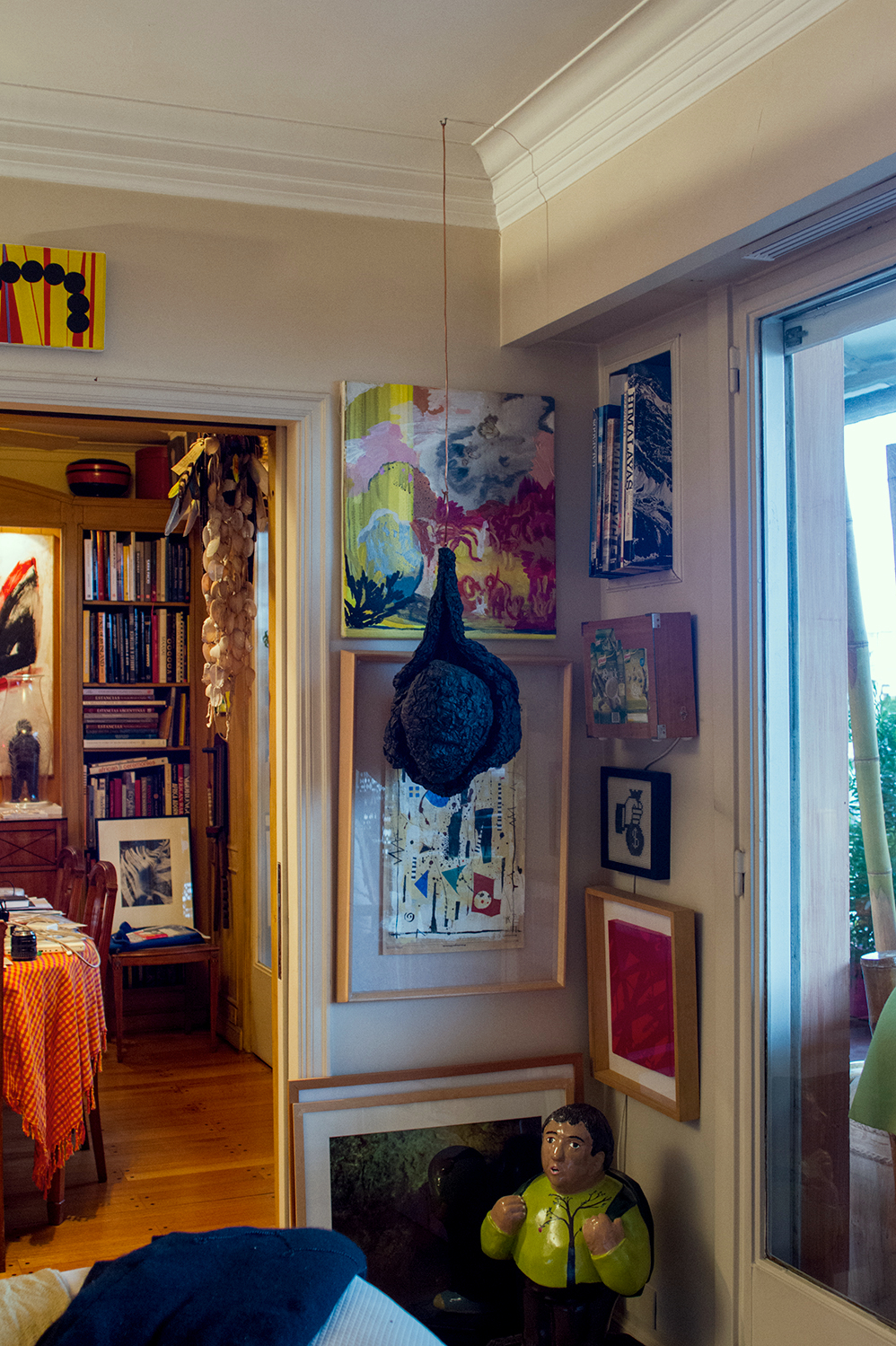
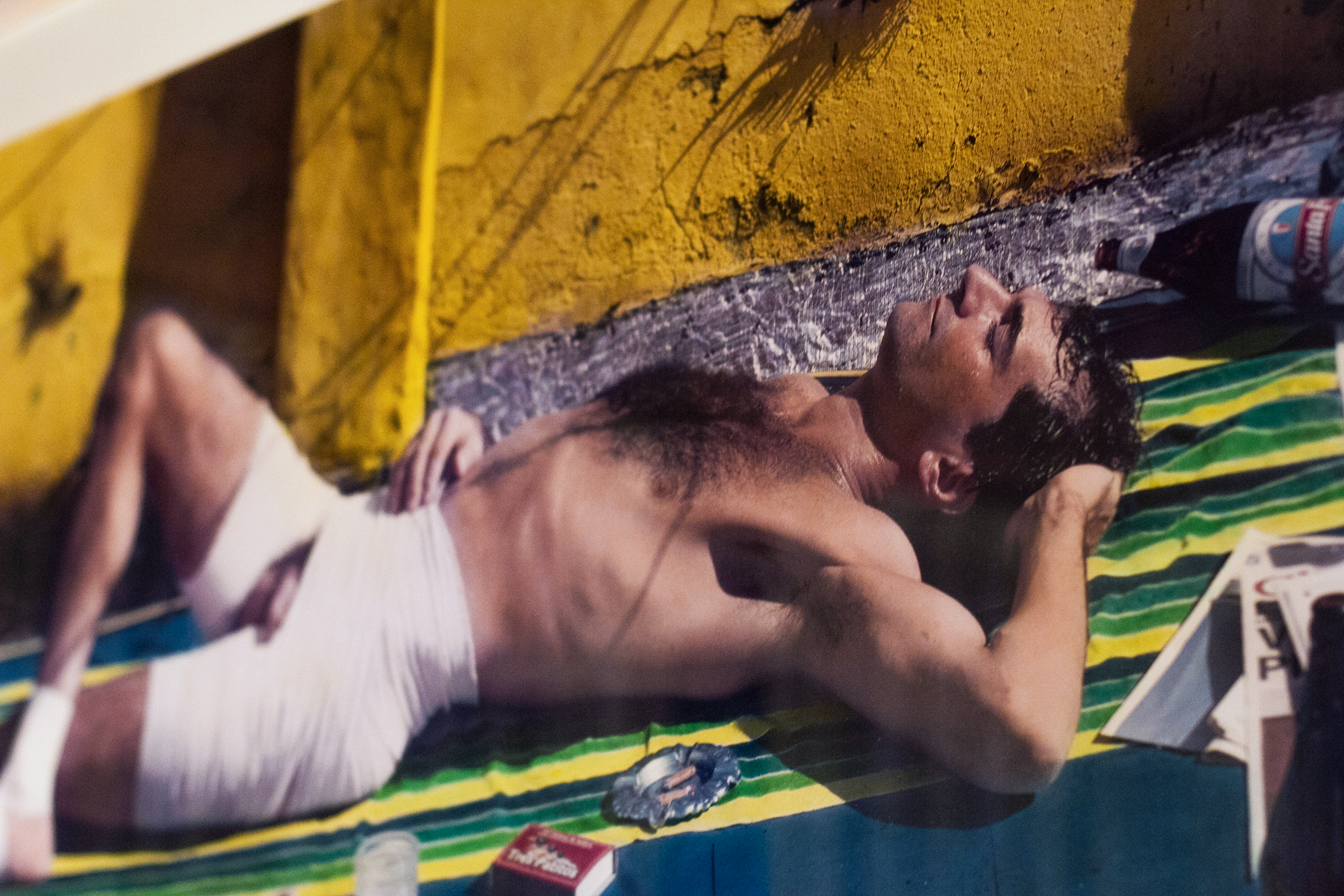
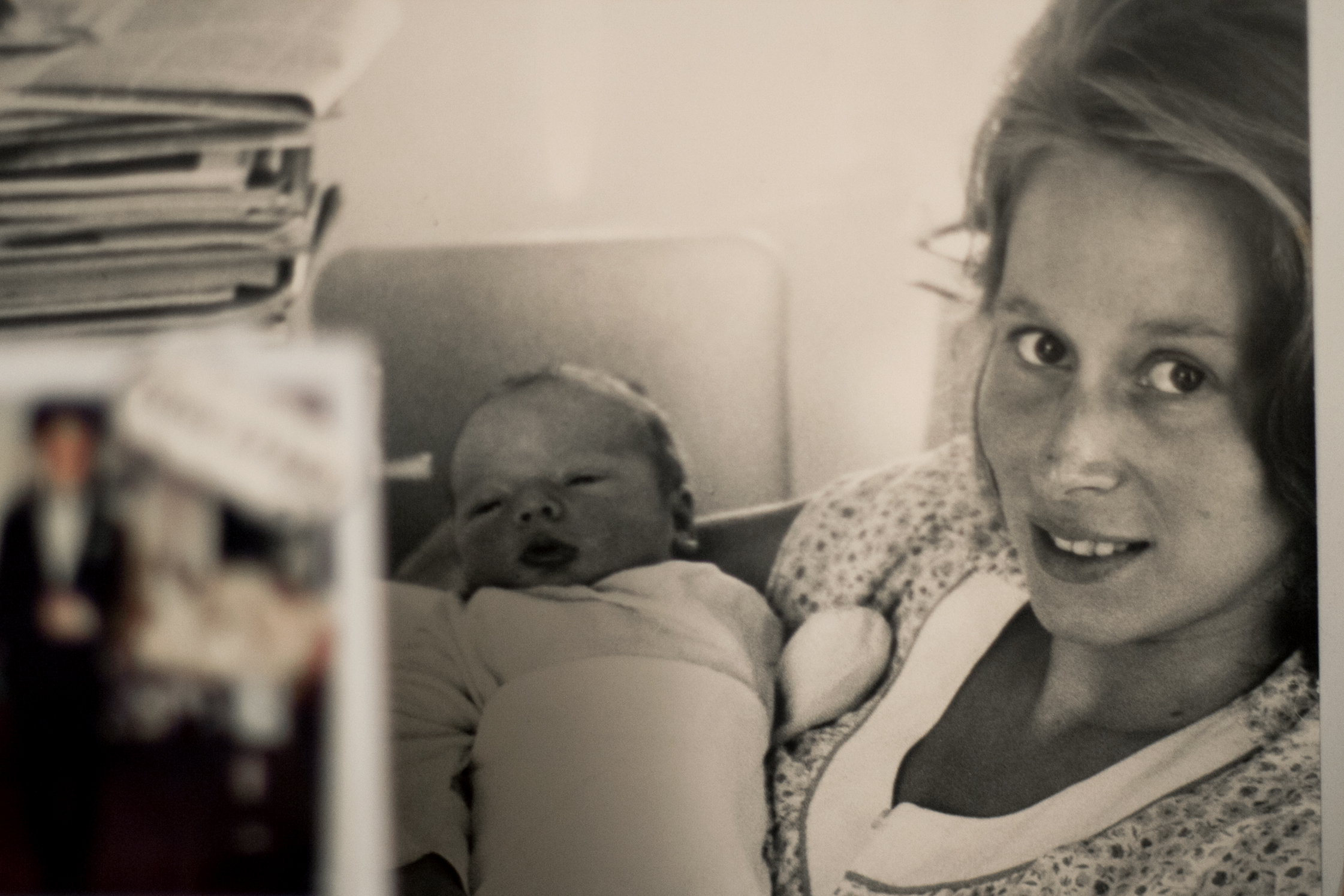
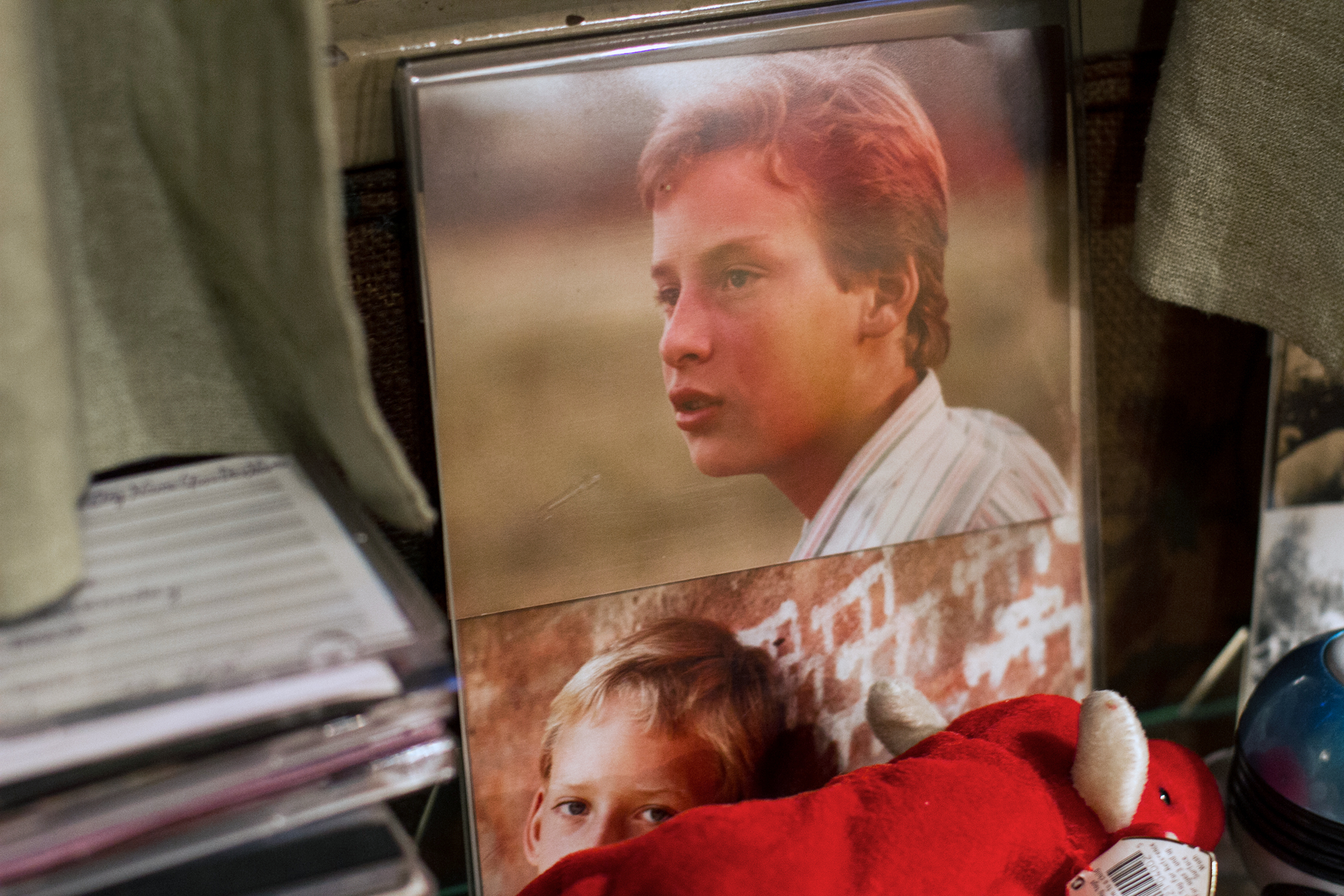
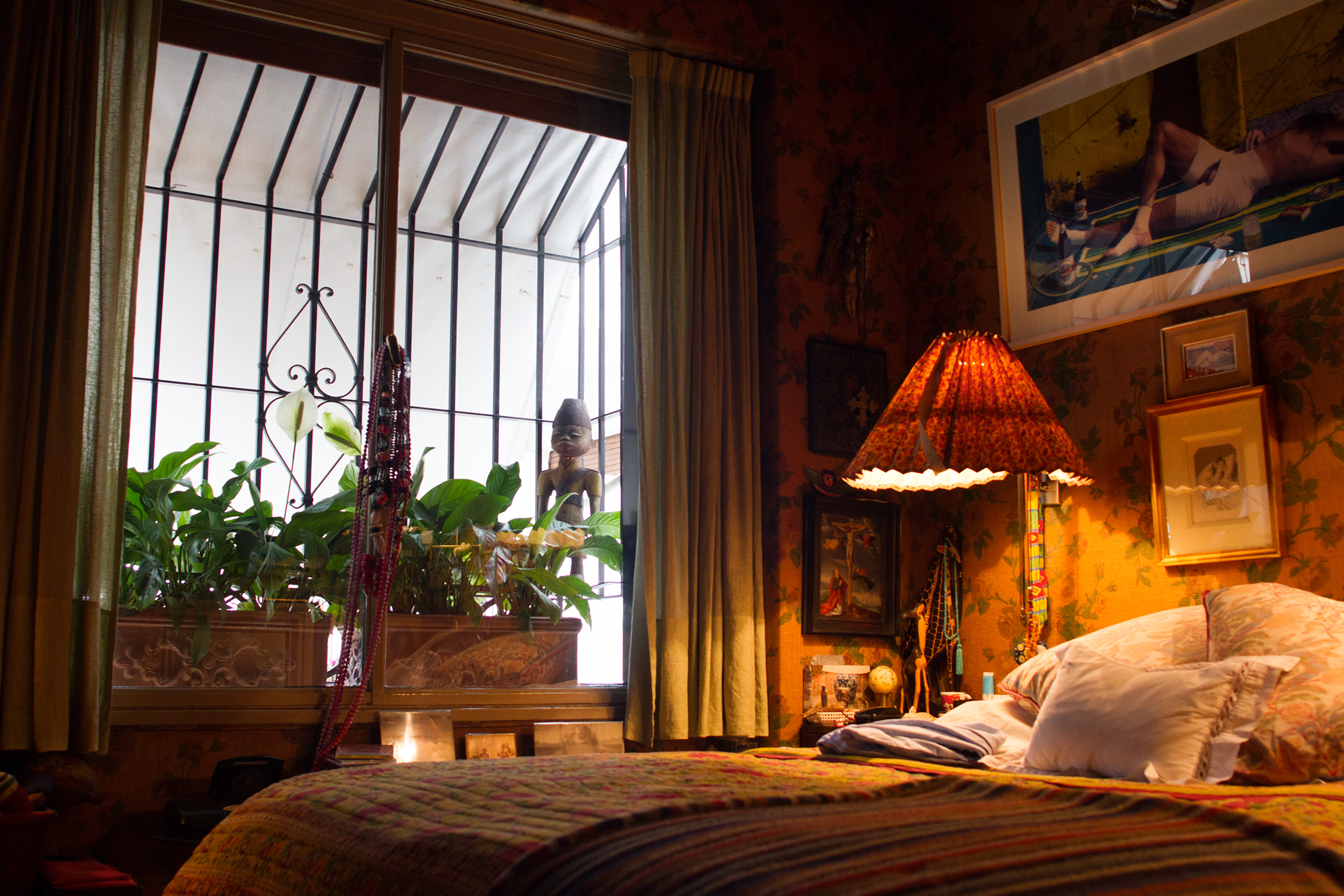
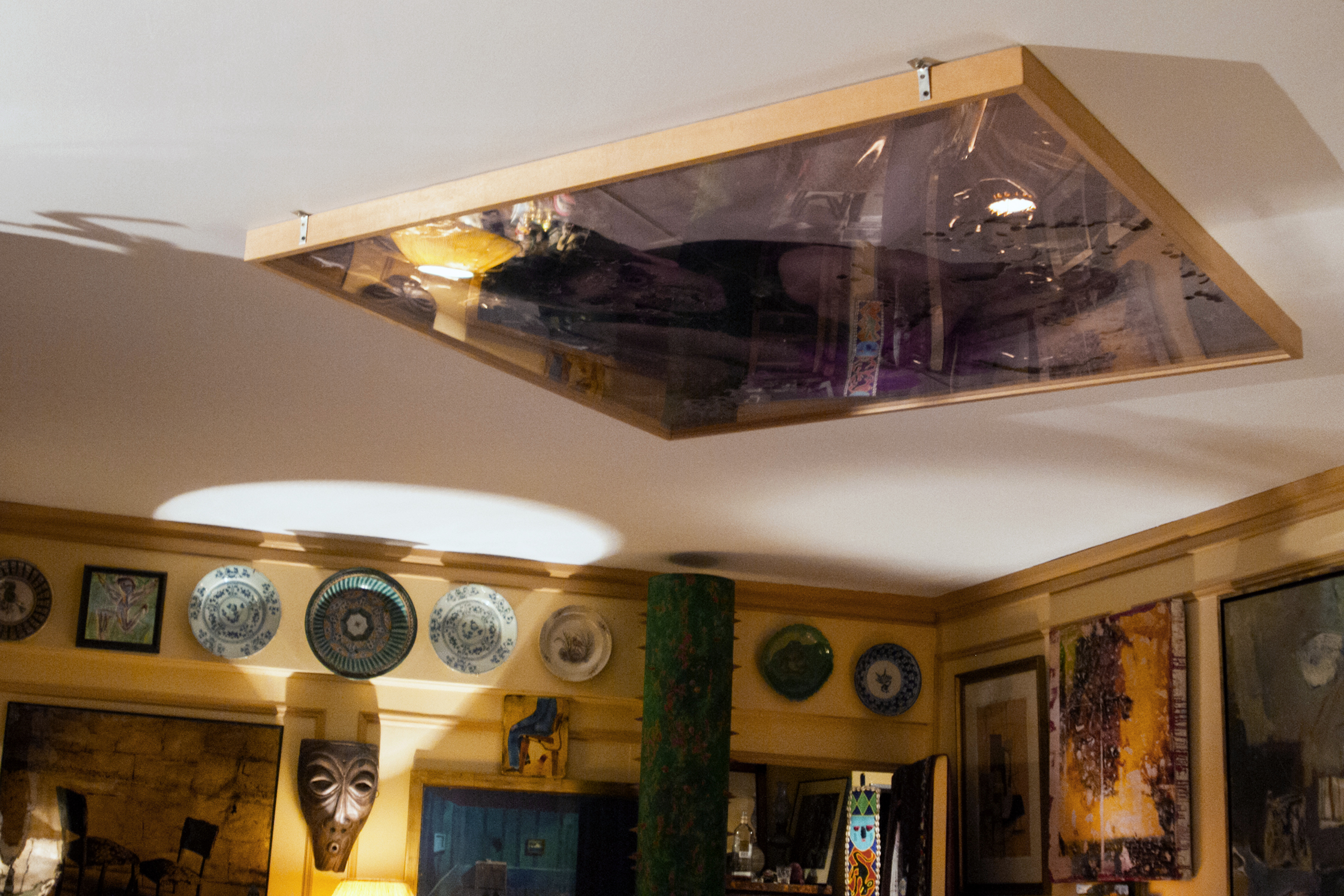
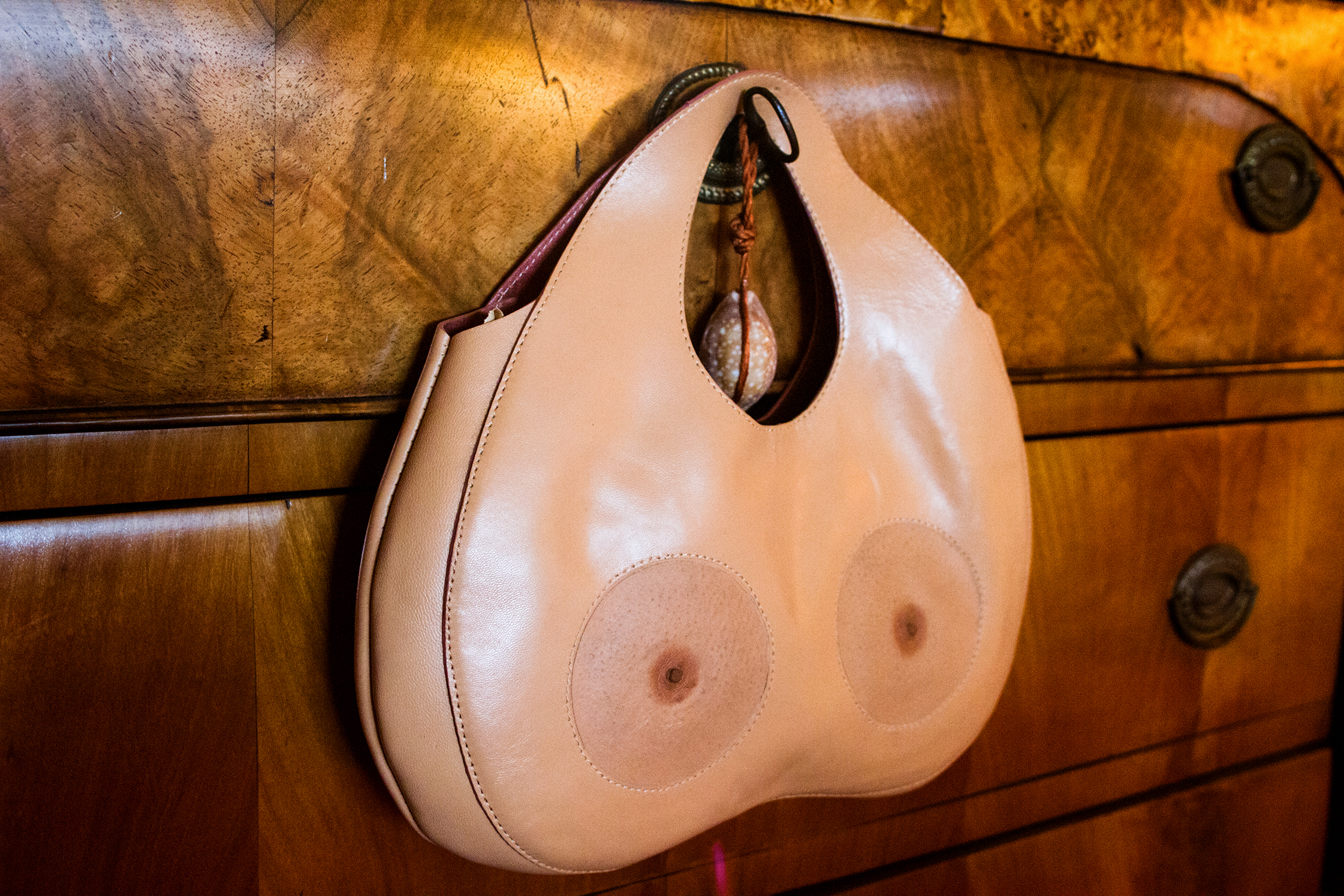
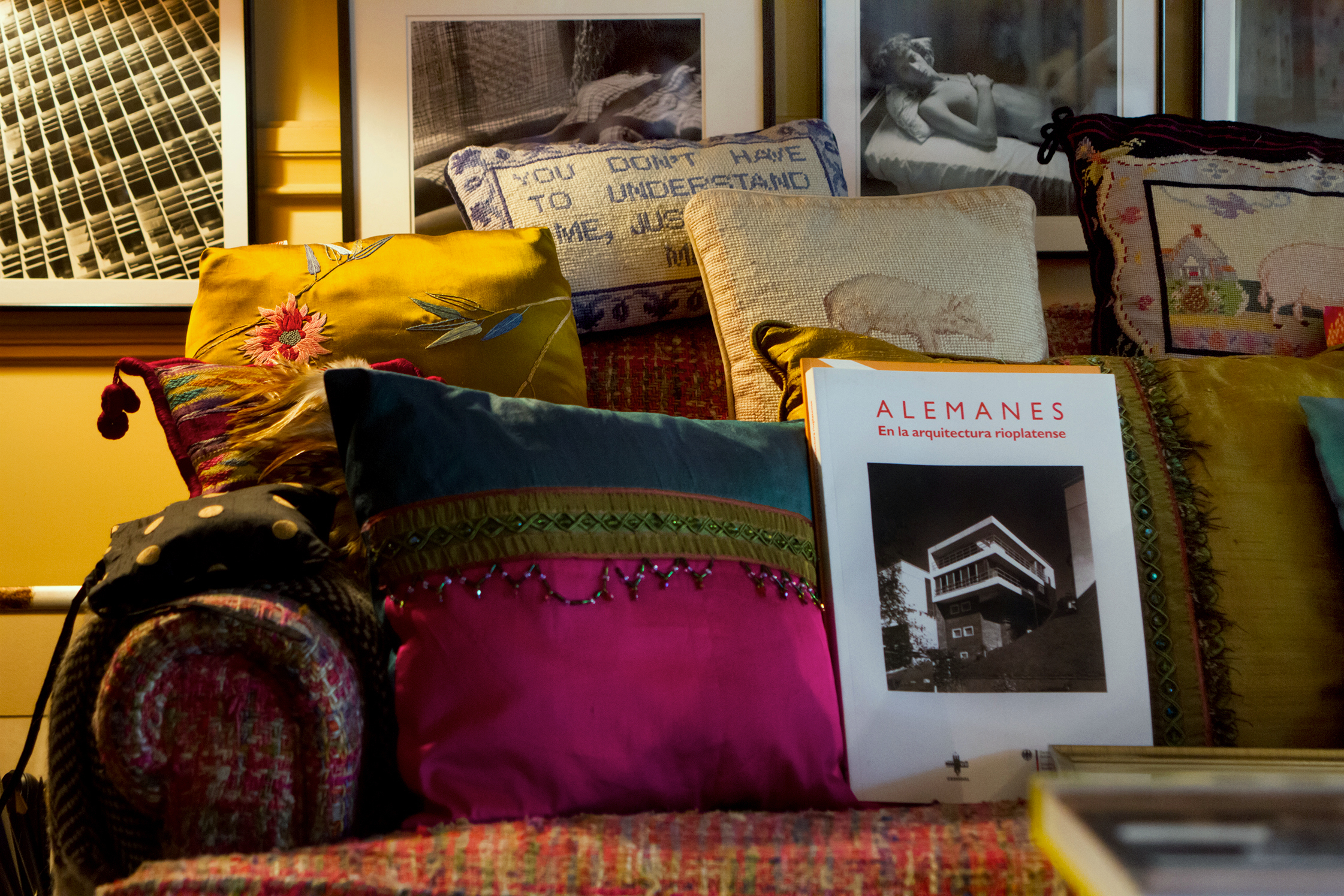
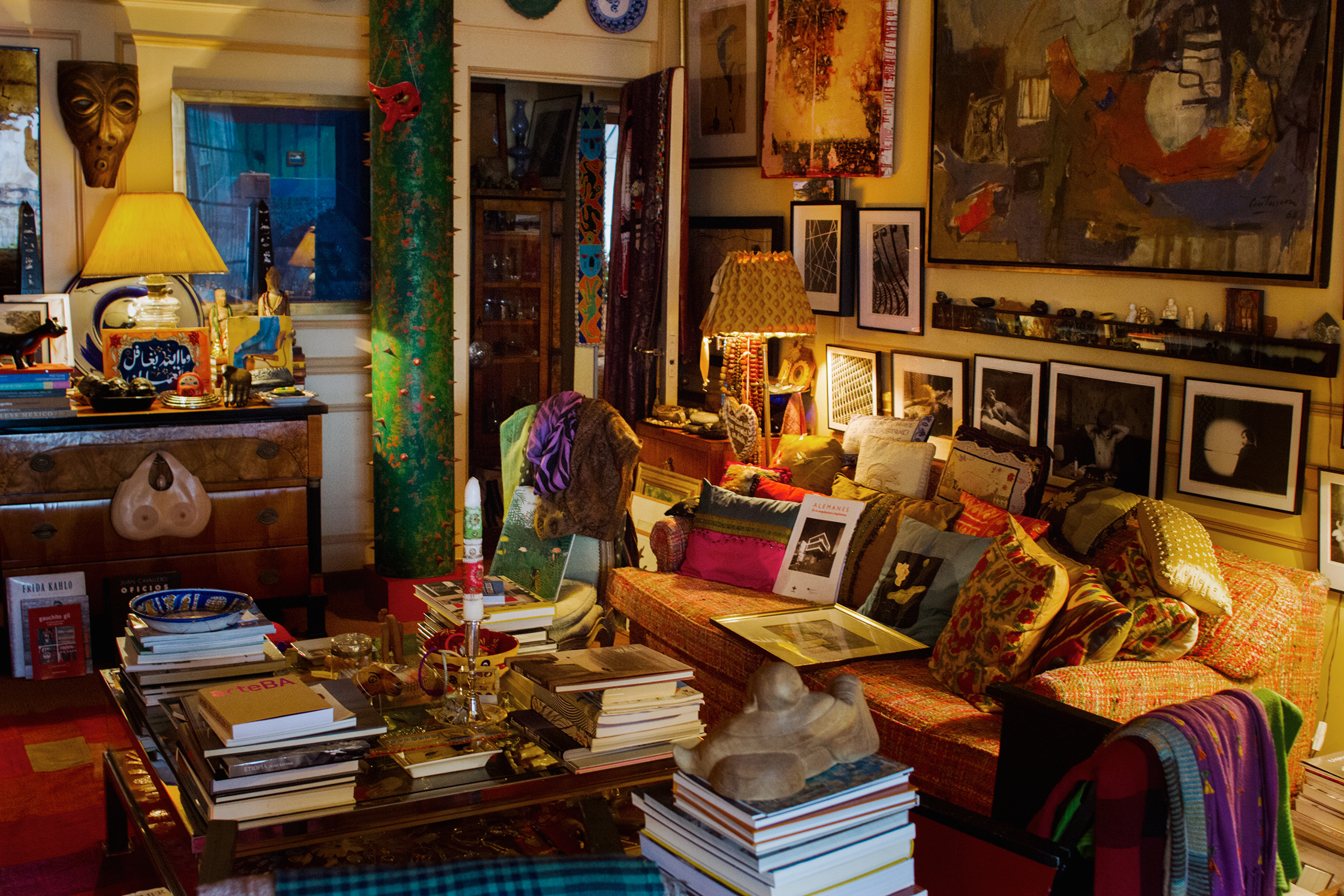
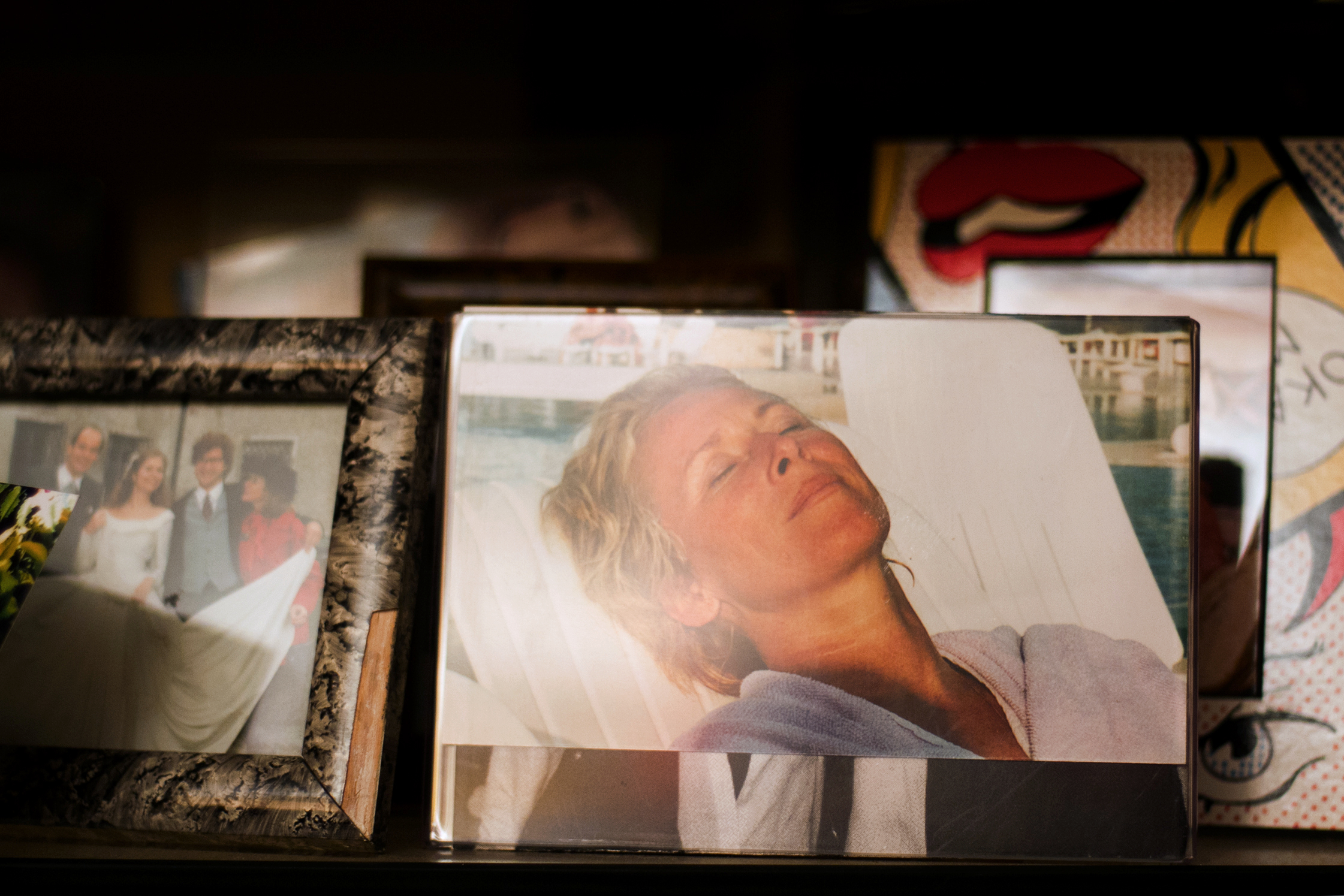
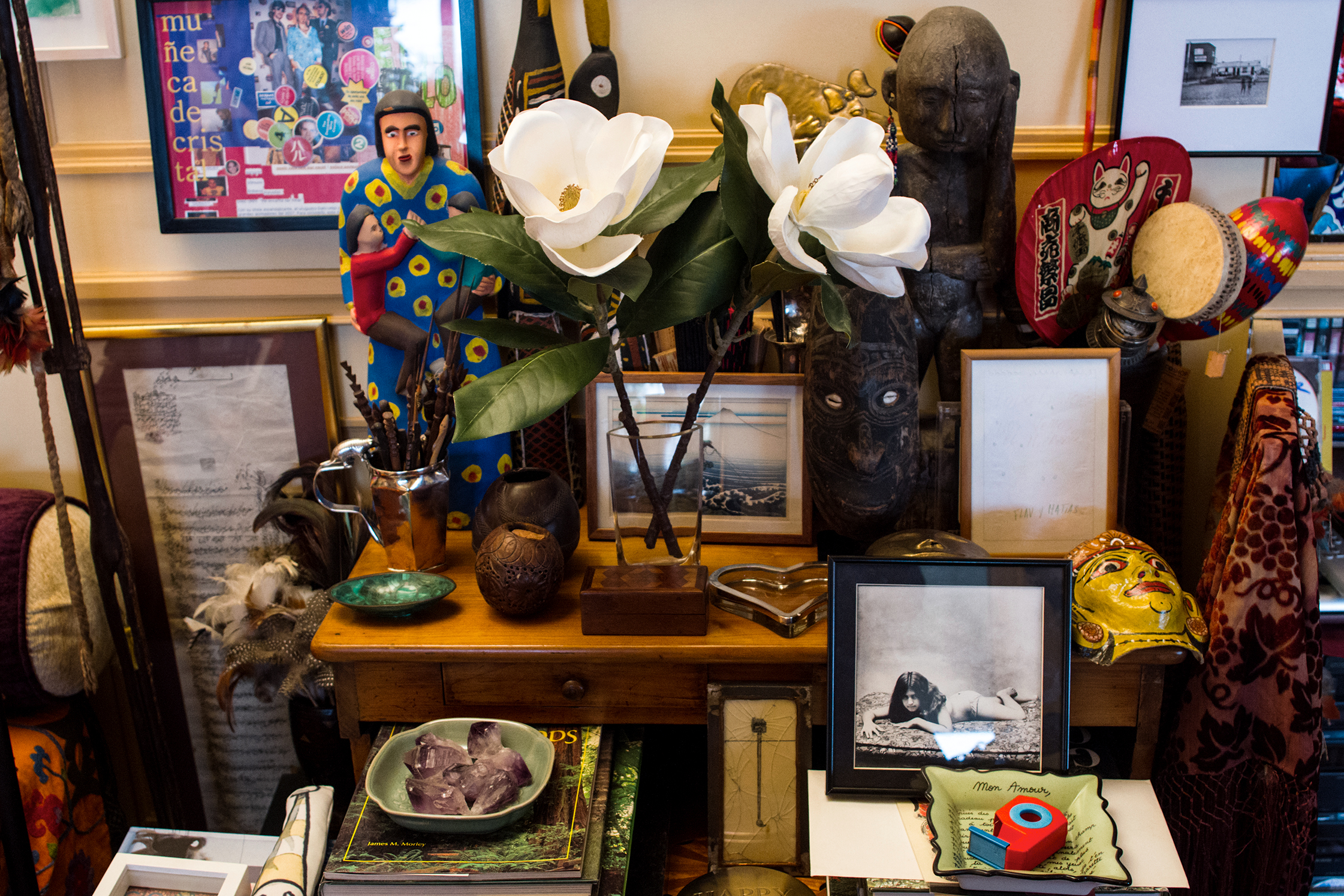
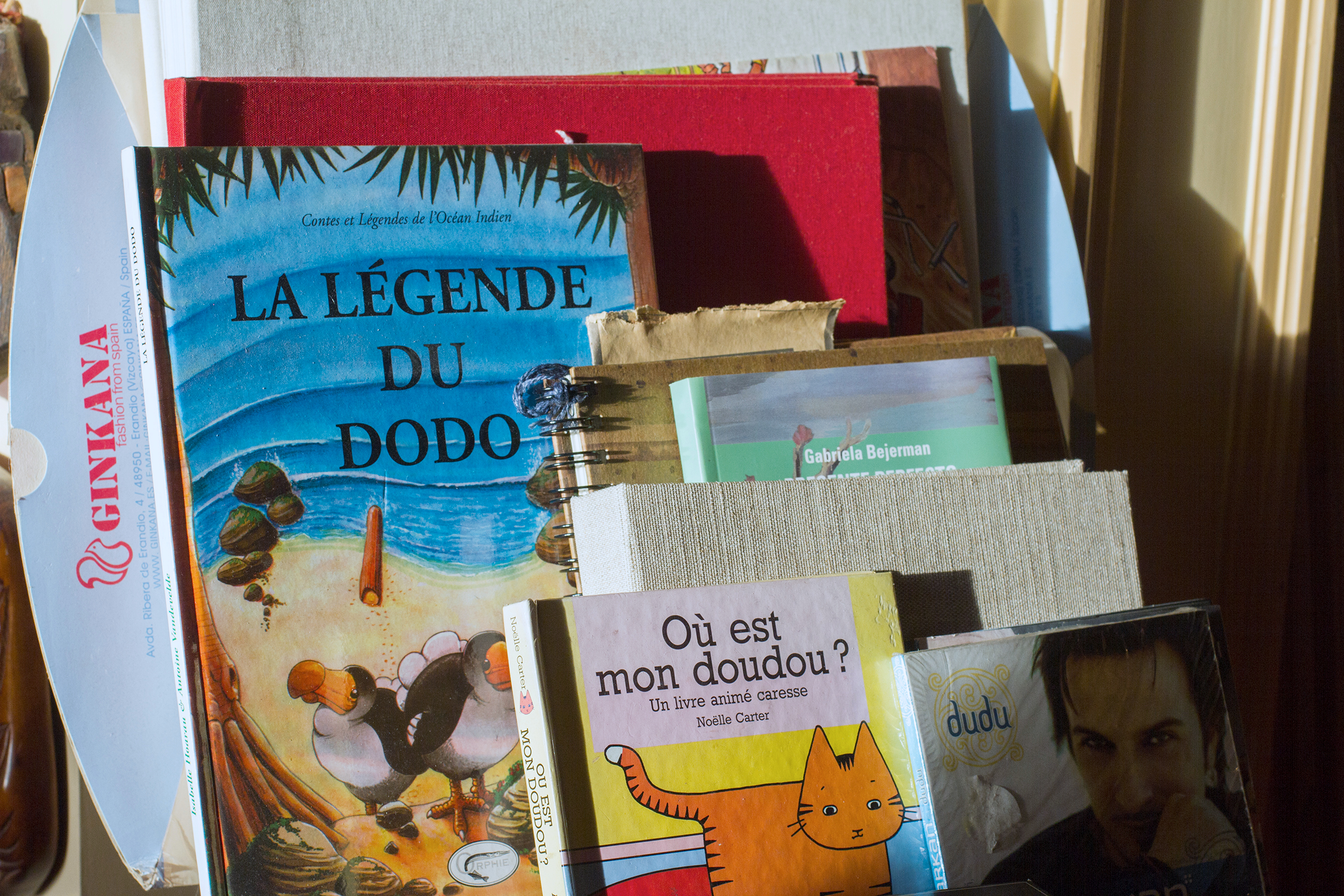
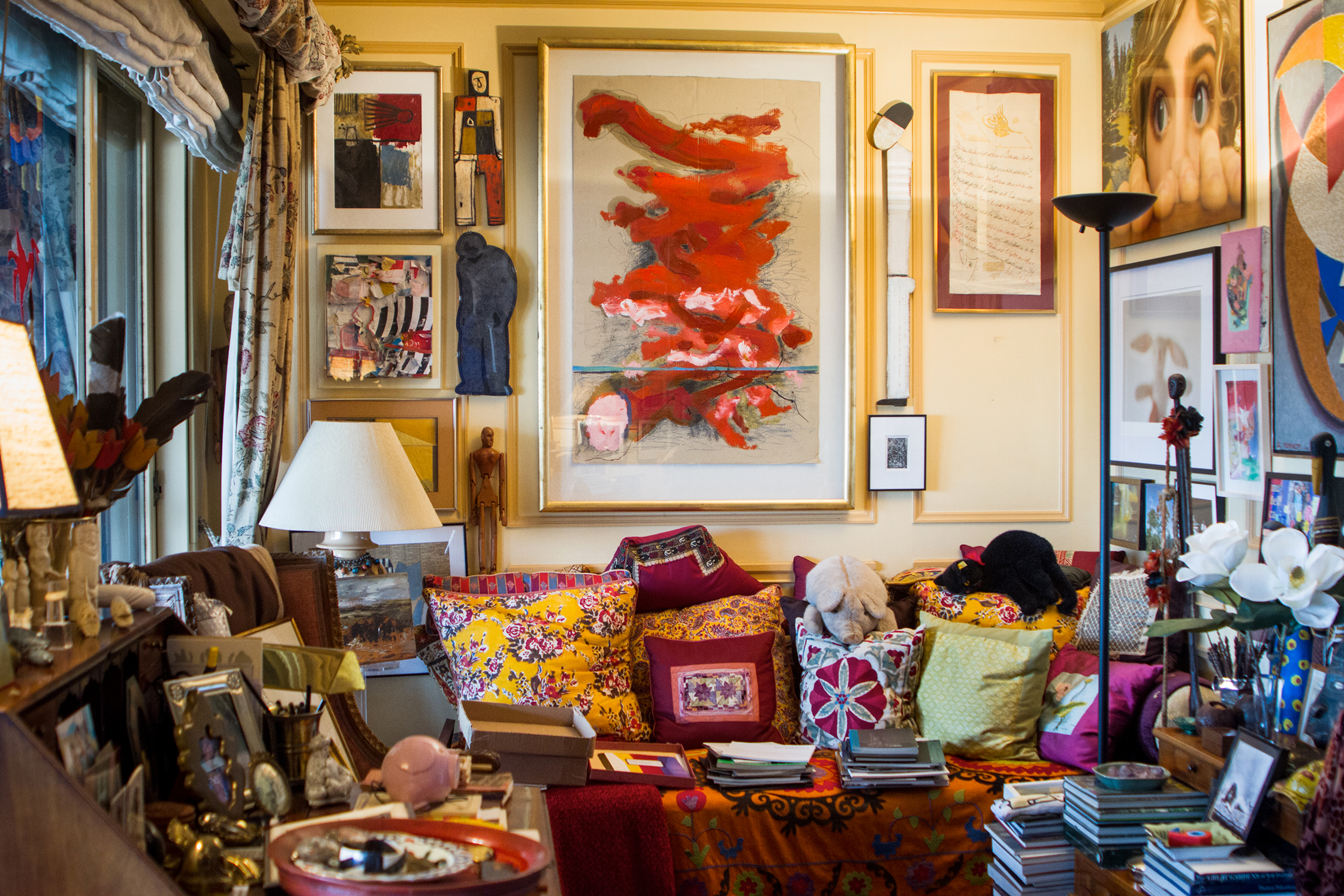
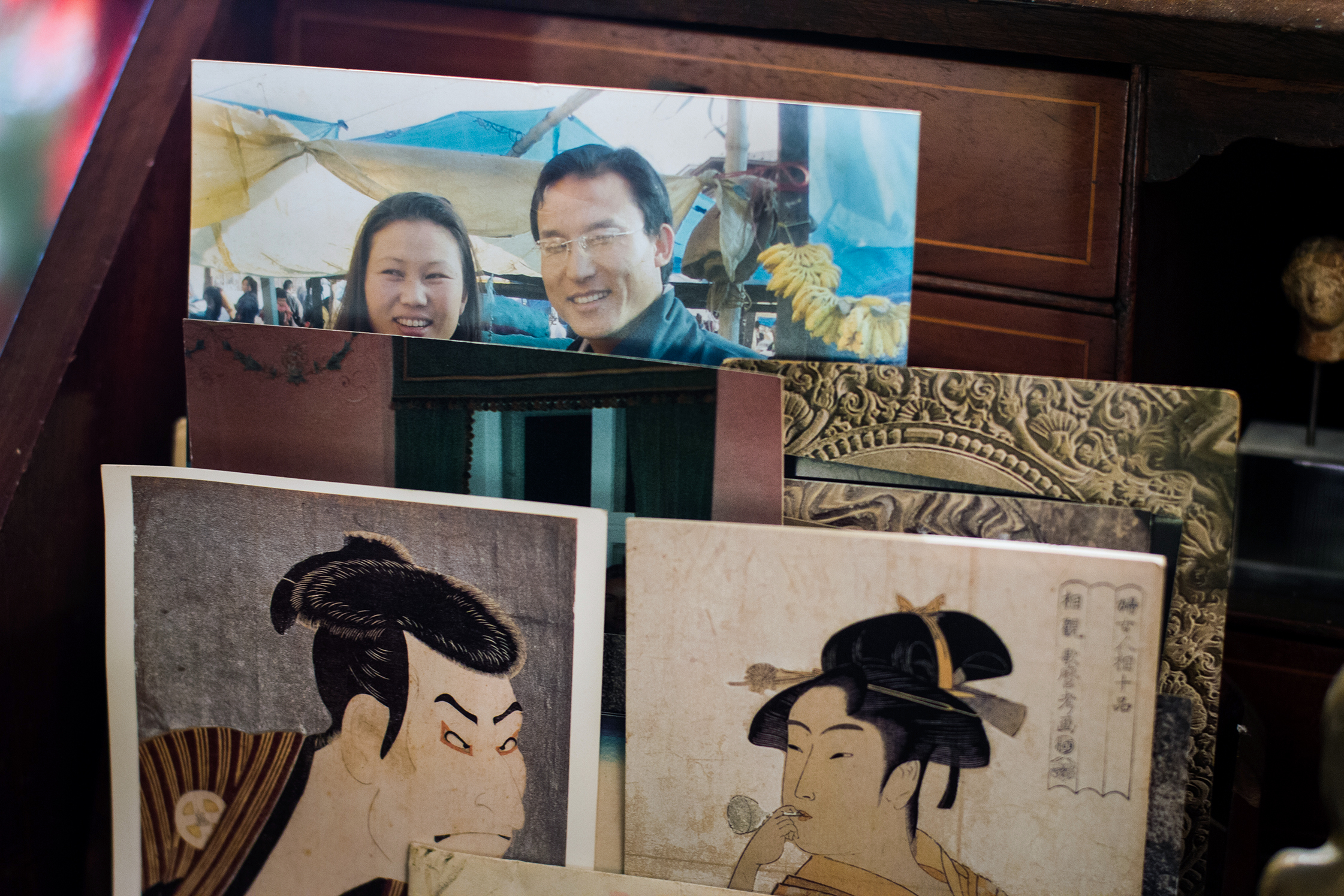
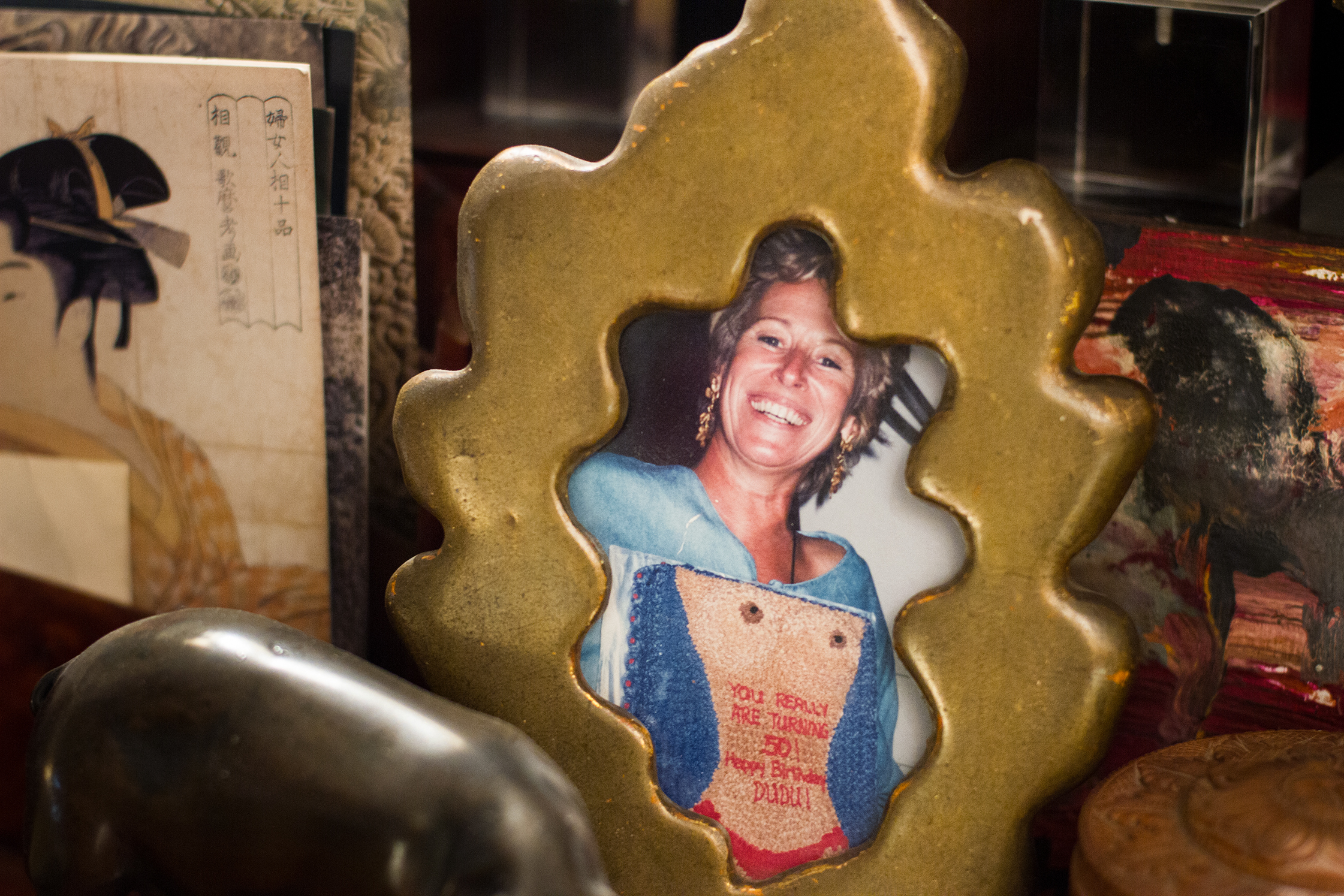

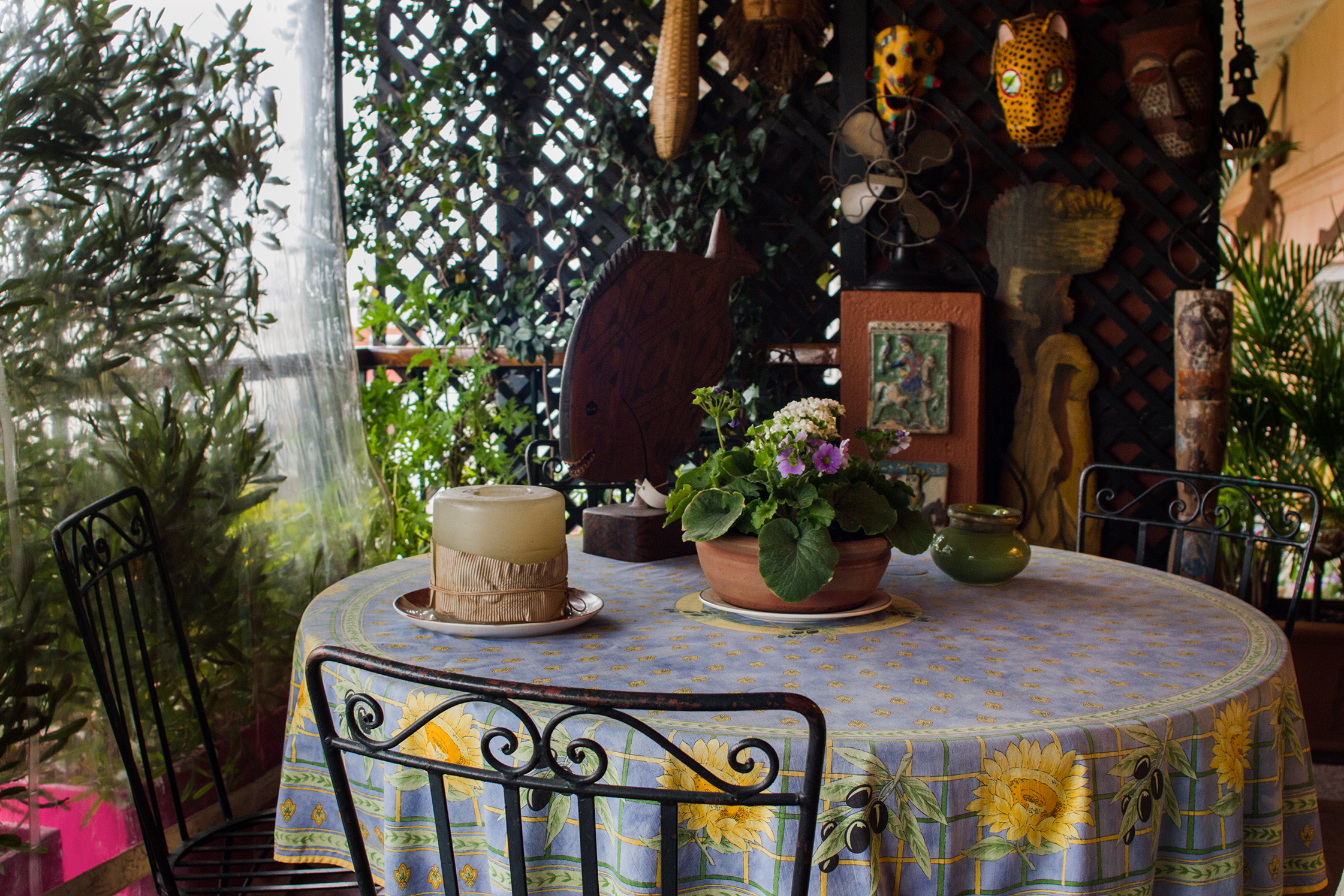
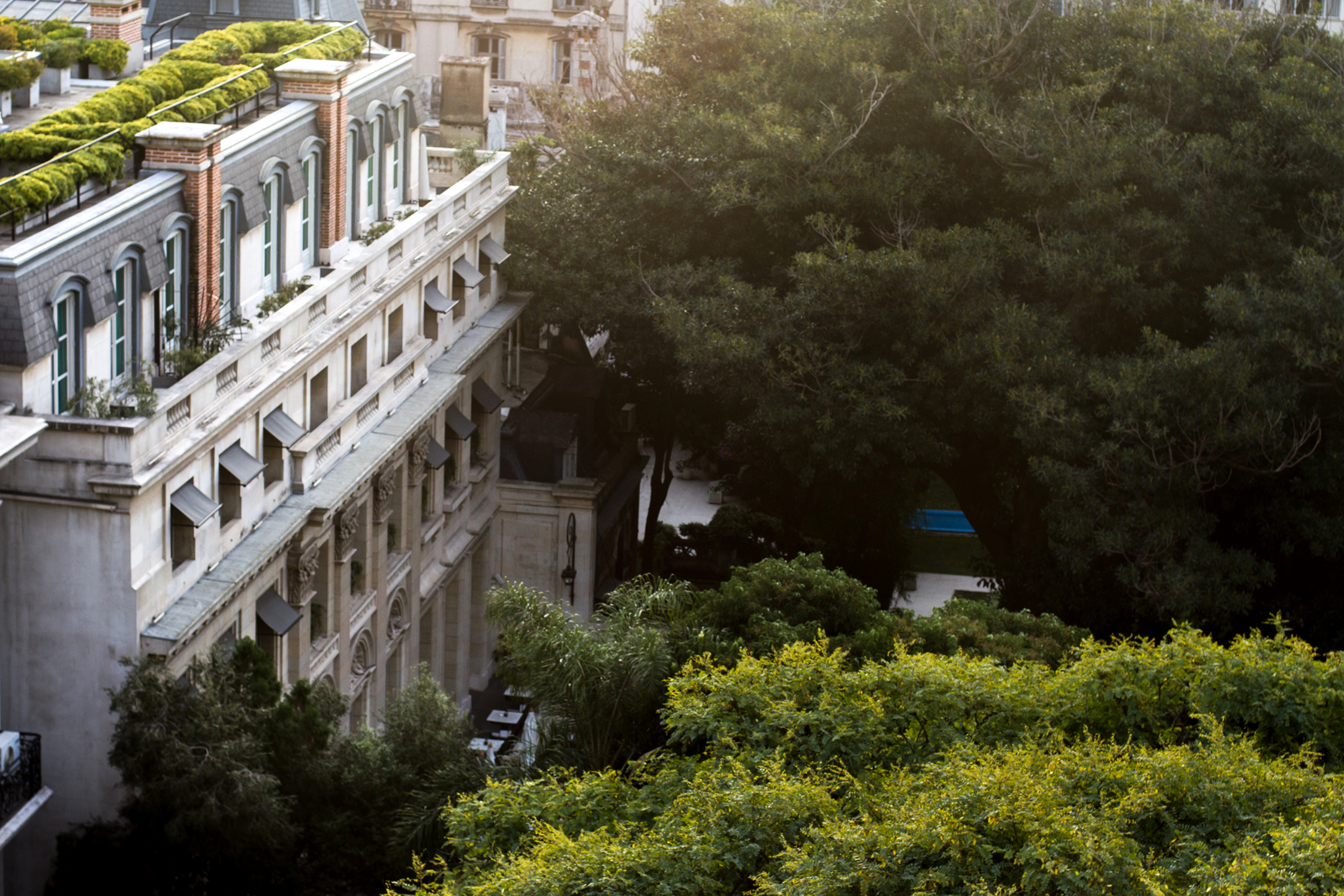
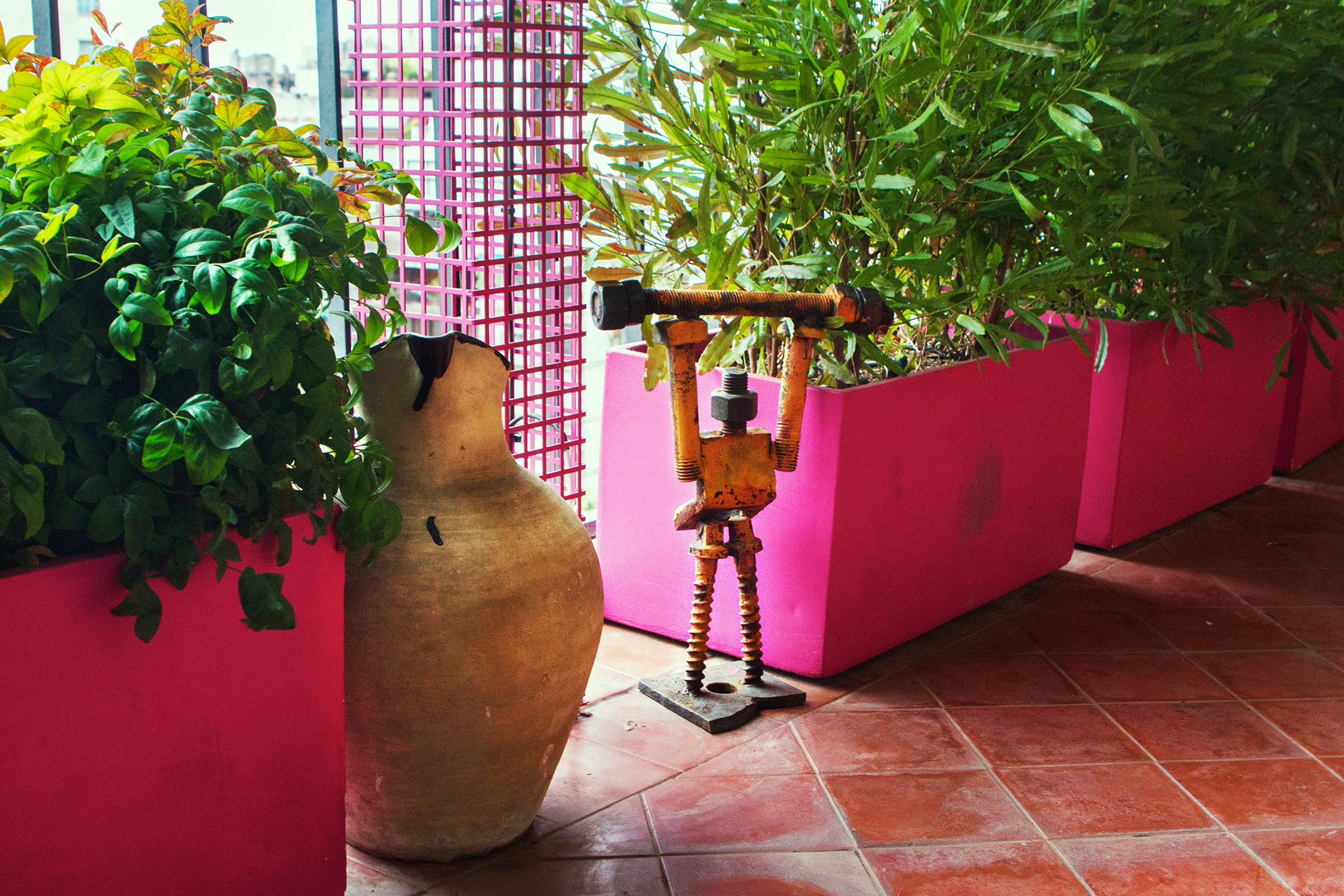
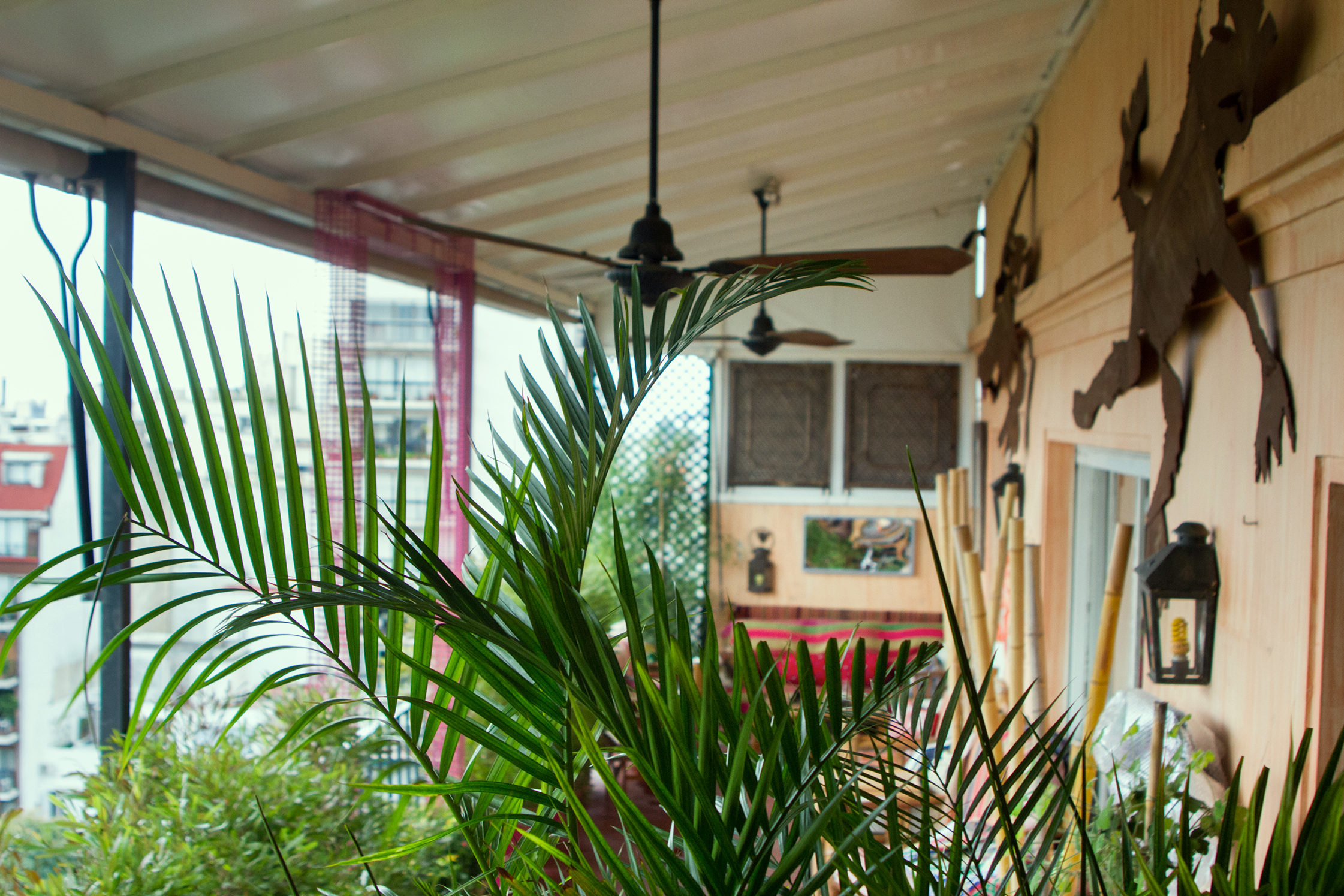
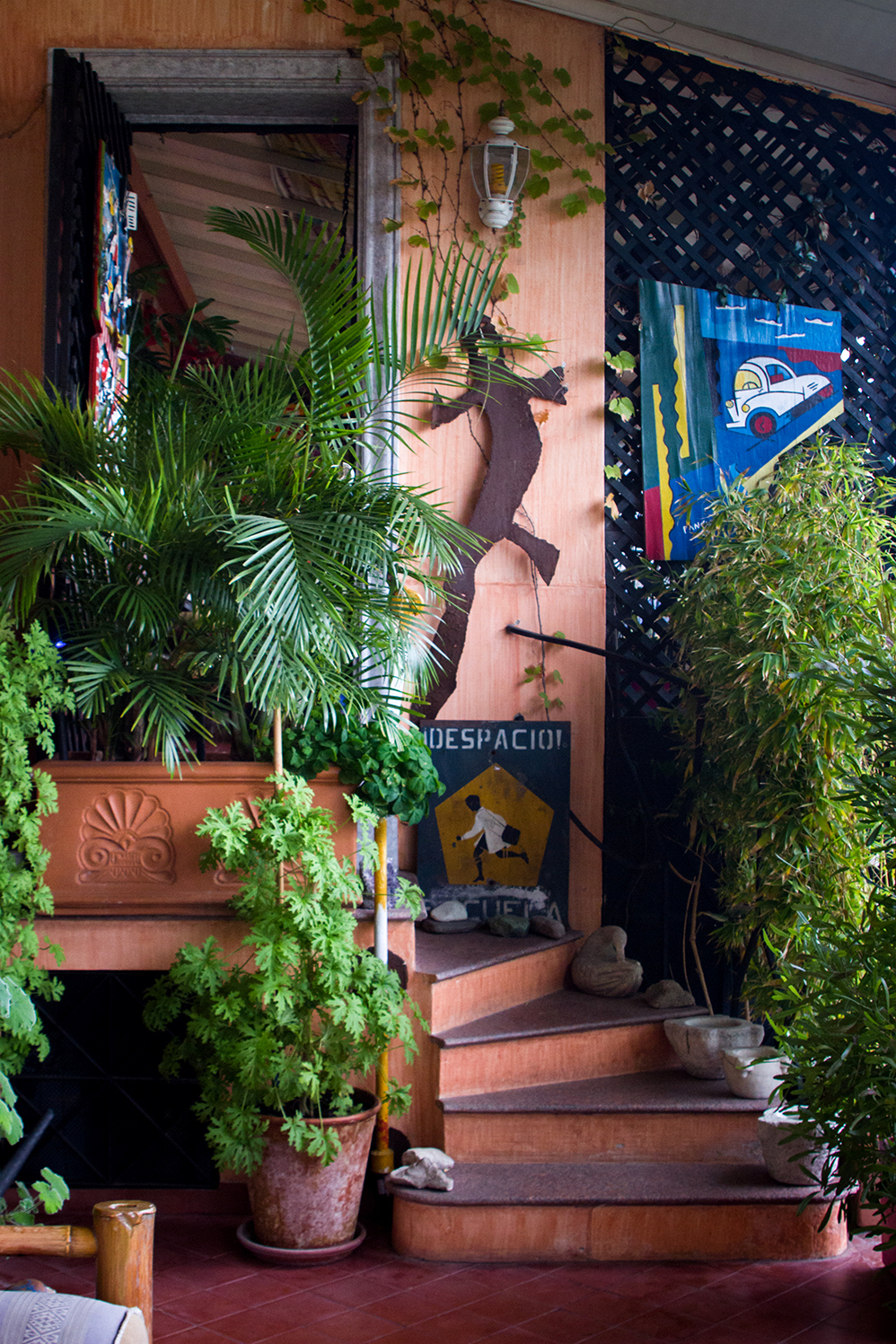
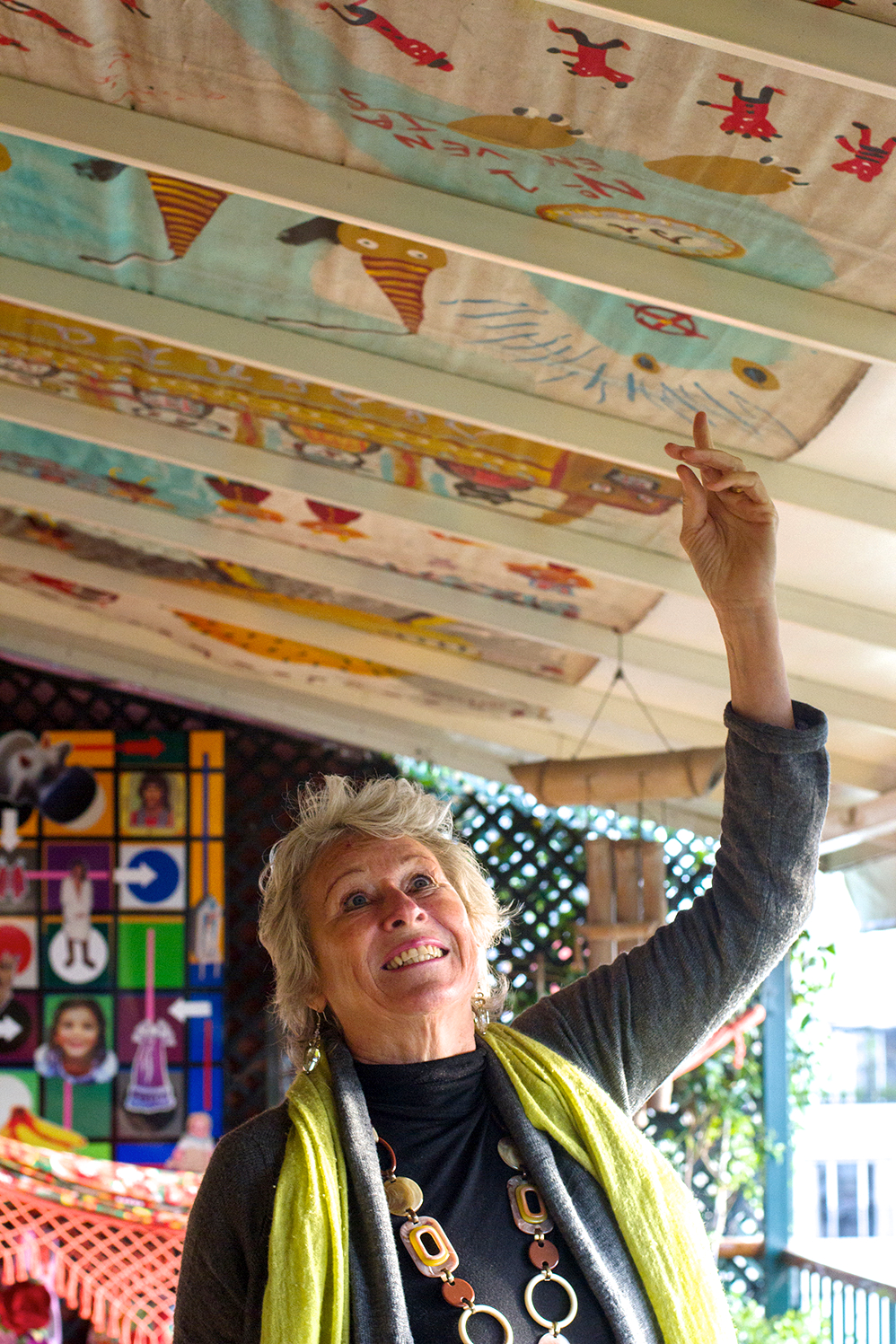
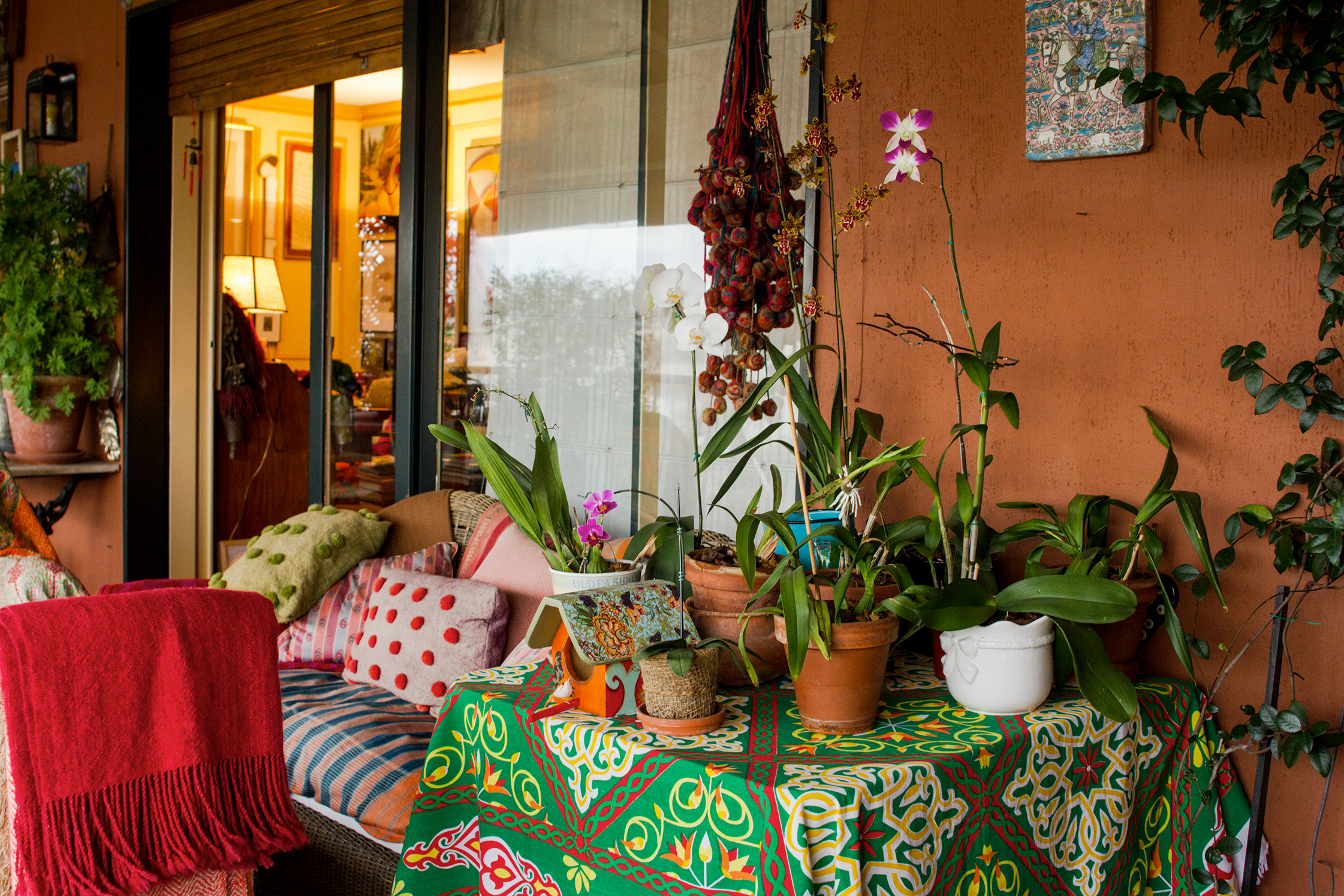
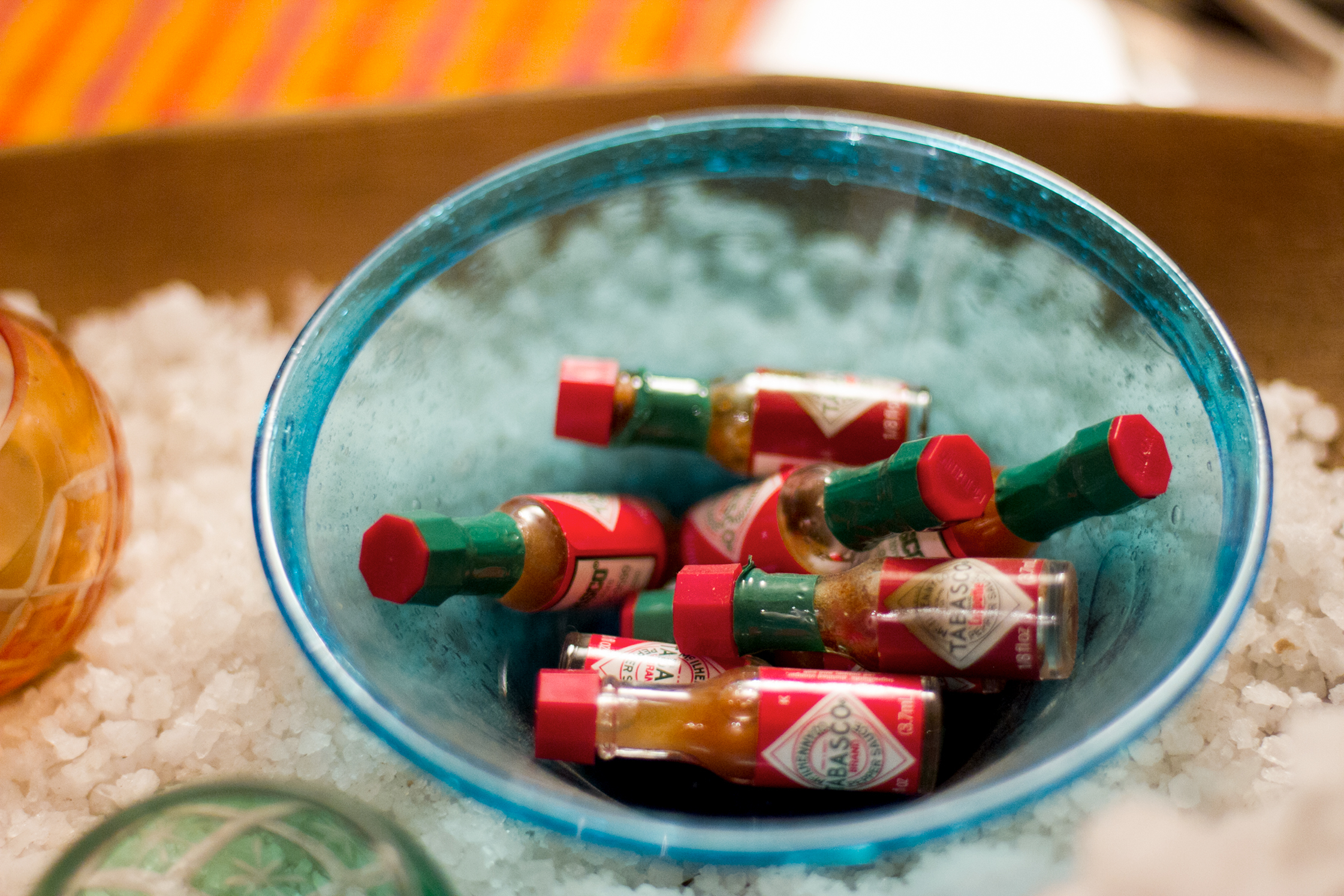
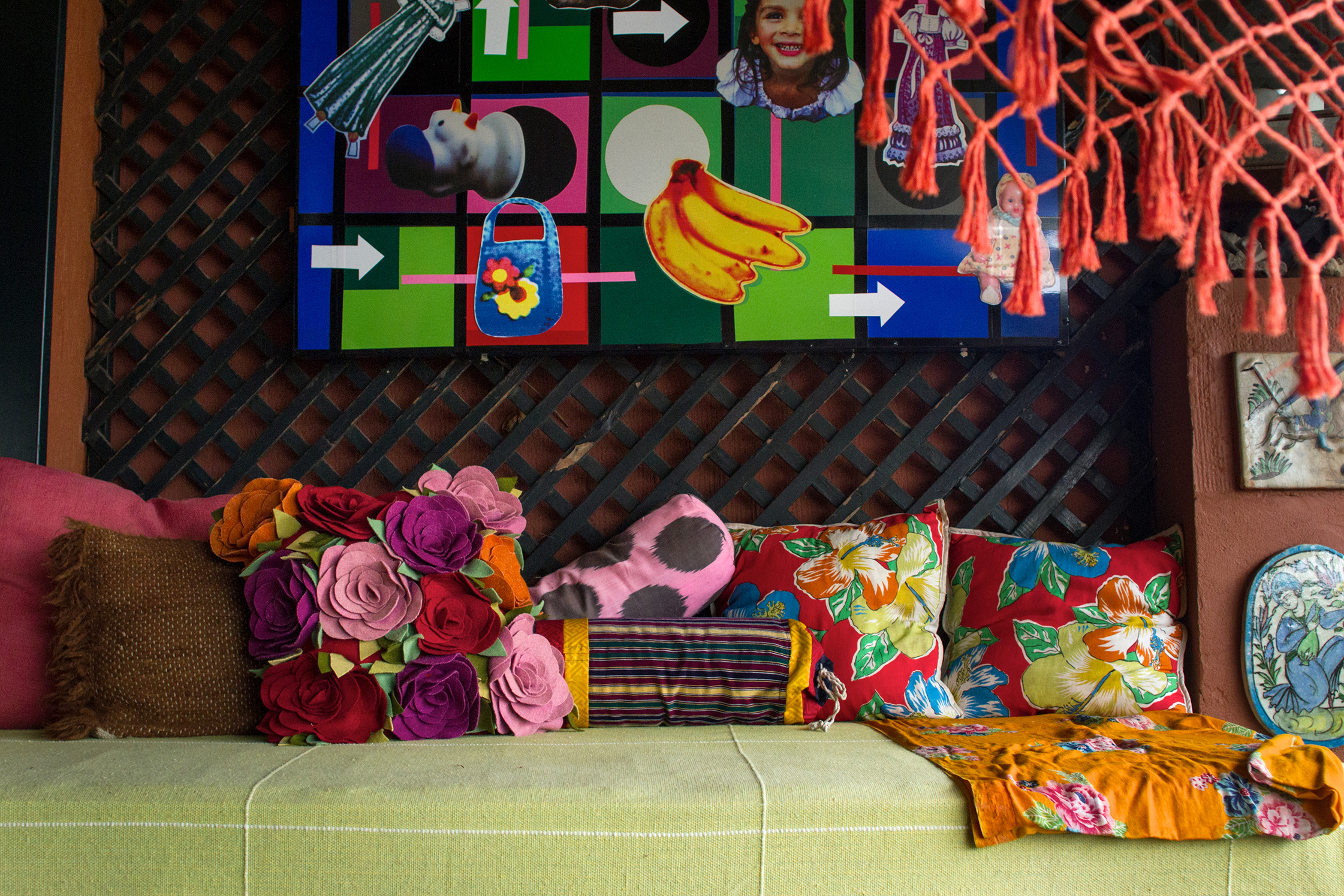
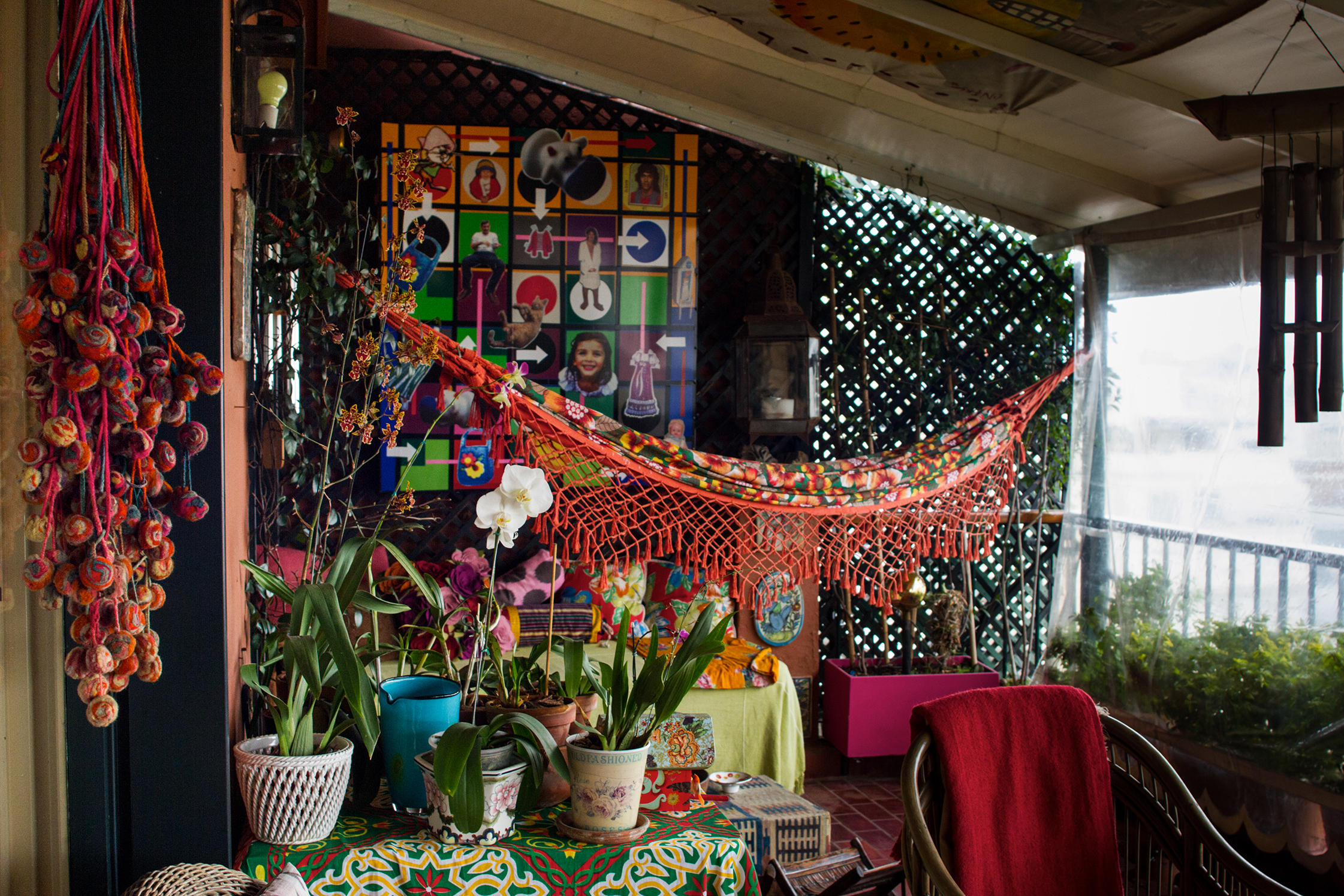
You have seen quite a lot in your life. Where did you lust for travel come from?
I was born in Hopfen in Bavaria, close to Munich. At the age of 21 I married my husband who I barely knew at that time. In order to change this unfamiliarity we decided to drive with a Volkswagen from Munich to Beirut for six weeks. At that time he worked for ‘Hoechst’ in Kairo, but moved to Beirut where we spent the next four following years. Our son was born there, as well.
When our son was three years old we moved to Istanbul, where we lived for seven years. It wasn’t a very easy time as there was a lot of commotion. During that period Turkey wasn’t visited as much as it is nowadays and Istanbul was definitely not a destination for weekend trips. There wasn’t a bridge over Bosporus. Later we left for Tehran where not even the slightest notion of revolution was present. It was there where we were supposed to find peace after the war-like conditions of Greece and Turkey.
Did it go well?
Yes, the first three months. After a while the first marches began to rise and shortly after a full-blood revolution was in action. It first happened within the communities and certain social shifts. But later, this very frustration turned against foreign countries as well. My husband used to be the boss of ‘Hoechst’ in the Iran and was taken as a hostage for a month. He was released when the company agreed to the conditions of the revolutionary guard and almost delivered themselves.
Regardless of this event, my husband had to stay another three years to manage the company. I stayed with him. We were good friends with the Canadian ambassador and witnessed his acts of heroism. Our two sons and their nanny already had left the country by that point.
What happened then?
We asked the company to relocate us after many years of civil war and other near war situations. As a result we were sent to Argentina. We lived in peace for a year. Then the Flakland crisis started and the chaos was once again present. My husband was relocated to the Philippines. But as my oldest son was already registered for his Abitur in Buenos Aires, I decided to stay and move to the centre of the city.
Did that involve an adaption?
Yes, of course. But a very good one. Living in the centre wasn’t anymore about the company but about my interests: art and books. During that same time period, Sotheby’s asked me to represent them in Argentina. So I specialised in Latin-American art, which at first admittedly, I had no clue about. I still remember sitting and studying thousands of catalogues trying to memorise all these names.
For seven years I went back and forth between Argentina and the Philippines. My husband then became the boss of ‘Hoechst Far East.’ We traveled from Manila to Indonesia to Malaysia to Burma to Japan. It was fascinating. When he retired, he wanted to move back to Bavaria and write. But that idea was out of question for me. At last, he moved back to Buenos Aires and soon after published his first book ‘Maroun’ with Suhrkamp. I also found someone who financed my own book ‘Estancias’ (Countryhouses): Jean Louis. The book was such a success that I stopped working for Sotheby’s and founded, together with Jean Louis, the publishing company, Ediciones Larivière.
What happened next with the publishing company?
At first a big fail: a book about tables. Back then, I considered the idea of making a book about tables quite beautiful. But I hadn’t considered the fact that Argentinians almost never sit at tables. Soon after, I met the French photographer Yann Arthus Bertrand who took amazing pictures from the air. I convinced him to take pictures of Argentina. This turned out to be a big success and we published two more books with him.
After that, we began to concentrate on Buenos Aires’ architecture. A lot of books about photography came into existence due to the admiration for this specific field. Not much money can be made with this as few Argentinians buy art, and fewer buy books about it. But if we didn’t work on these projects, all of these photographers would never be documented and they really deserve it. We work together with Ricardo Siri Liniers, the somewhat Argentinian equivalent to Loriot and have published comics with him. I consider it very funny and think that comics have become a resurging trend around the world.
Your second passion is art. What fascinates you about the art coming from Latin America?
On the one hand it fascinates me because I live here. Other than that, the niveau is quite high. In Uruguay, the infamous ‘Escuela del Sur‘ has existed for some time now. From early on it was discovered by many foreigners, especially Germans. The school was founded by Joaquín Torres García, who has influenced many generations not only in Uruguay.
Argentina also has had many interesting artists. Especially Kinetic Art from the 1960s. Unfortunately this was something unknown to me earlier and the fact that some of the works were obtainable for very low prices is now unbelieveable. For example, nowadays Julio le Parc, who belongs to this generation, has a solo show in the Palais de Tokyo, Paris and his art is anything but affordable!
You collect as well and are known for your unique objects from all over the world, like a huntress. Is there a method to your habits of collecting or is it an instinct?
That is the best analysis that I have ever heard. I am an instinctive huntress, even though now I have acquired a method that is quite simple. I almost have no space left, which is why things have to be small. Back then, the size didn’t matter. But I could and still can only buy out of instinct. I have never looked for something specifically or listened to voices that predict the future worth of certain artists. I bought what I saw and liked. Back then, I didn’t have that much money and was therefore quite limited. So in the 1970s in Paris I couldn’t by Gerhard Richter who then was only worth 2,000 marks. That is perhaps one of the things I will regret for the rest of my life.
In the past I would buy a lot in Turkey, Iran, and the far East. But more and more I began to specialise in Latin American art. I just sold a painting for the very first time. I bought this painting a long time ago in Turkey for only 80 dollars. Apparently I used to have a very good eye for things like that. I sold it for its hundredth original price to a private collector in Turkey, as the artist has become quite famous over the years. These are the great surprises that sometimes emerge out of nowhere. This is not only fun for me but also verifies that my eye for art is not that bad.
Your collection is also very special because you went into the unknown. How did that feel travelling to new places so regularly?
I have always considered it exciting. I never left a place crying. I always thought about the opportunity to discover other interesting people and environments in other places.
Iran was a fascinating place. From there we went to India, Pakistan, Afghanistan, and Nepal. Basically there was no country we didn’t visit and would always leave friends behind. Except Iran, where many were killed and others were forced to flee the country. Something not so positive is the awareness of the impact and suffering on your children due to this ‘vagabond life.’ They certainly have a lack of childhood friends, a foundation and a feeling of home. Argentina comes closest to this feeling for them.
Why did you end up staying in Buenos Aires?
I was able to go around and discover new things. The city is very international and fascinating. People would constantly come for a visit, even though it didn’t used to be very liberal. For instance, homosexuality was a taboo topic for conversation. I was one of the first to invited gays into my home. Back then, no one would have had the guts to do so. This was one of the reasons Argentinians were unsure about me. It was very unusual for a woman to live by herself in a small flat within the city. They thought I was poor and wanted to steal their men. Some time after, Argentinians began to discover their own country. They traveled to Patagonia or to the North, somewhere it was hard to reach. Argentina was basically discovered by its own people, especially by me. It consists of such fascinating landscapes.
Are you still fascinated by Buenos Aires to this day?
Yes and it increases every day, regardless of the returning insecure political situation. Everywhere there are small cafes, restaurants, galleries, and ateliers to visit. It is unpretentious. There is something that is called ‘Calor humano’ – human warmth. Argentinians are extremely nice to each other. The daily life is very easy and one can always finds help without a problem. Additionally, many people come to visit and other countries are easily reachable. This avoids the feeling of being at the end of the world. It is great to be able to go to Peru or Brazil so easily. I simply love South America as a whole and consider Buenos Aires to be the perfect base.
What is your favourite place in Buenos Aires?
That depends. I very much like to go to restaurants, cafes, and the streets of Recoleta or Palermo Viejo. During the week, when there are no tourists, I like to go to Tigre and drive along the canals. It never loses its magic. Other than that, I love markets which is why I like to visit San Telmo. What I especially like about this town is that one can always find new fascinating corners and things. One place I don’t like is Puerto Madero.
Where can one find good art in Buenos Aires?
The best place is ‘arteBA,’ a contemporary art exhibition of Buenos Aires. It has existed for the past 22 years and has become an important annual event for both local and international collectors. All important galleries of Argentina gather, as well as the rest of Latin America. Aside this, there is Sektor Barrio Joven. Here, each year one can discover great new galleries and artists.
Buenos Aires is your base, however you still travel at least half of every year. Could you talk about this for a bit?
During December and January I am mainly in Uruguay. At that time it is the middle of summer in Argentina and it is almost unbearable. In February, I usually take an exotic trip as long as my energy lasts. In March and June I am always in Buenos Aires. Months like July, August, September, I always go to Europe. In October and November I am almost always in Buenos Aires, even though I like to take small trips – mostly within Latin America.
How do you organise yourself when you are away for three months?
I have learned that black is very important, perhaps mixing it with a bit of green. Even more important are black leggings. My suitcase was stolen in Alexandria three years ago. I was just coming back from Ethiopia and had everything with me that I needed for the following three months. Ever since, I leave a small amount of belongings in Europe, in my small flat in Munich, and also in Paris. This small reserve sometimes gets boosted and the rest I take with me. This works out much better than you would think. It works out so well that I am often shocked to have carried so much luggage for such a long time.
Constantly being on the move not only requires the right luggage but also a lot of energy – where do you get it from?
I was born with such energy. It is very much rooted inside me. I always dream of leading a zen life one day. One day, every morning I will practice Tai Chi and stretch. But I love to sit at my computer at 6:30 in the morning, read international newspapers and check my emails, knowing what to expect of the approaching day. I love meeting new artists, talking about upcoming book projects and visiting exhibitions. In a country like Argentina, it doesn’t happen very often that you will be at home reading a book at night. There is always something to do. But I love to be left alone on the weekends. I also have to calm down sometimes.
Where can you do this best?
I mainly drive to the suburb of Lomas de San Isidro. My business partner Jean Louis has a house with garden and pool there. When there I occupy myself with my biggest passion, something that we both share: Arte Popular. That is the true original and folk art of South America. Paraguay, Brazil, Peru, and Colombia still to this day produce beautiful things out of clay and wood in the form of masks, figurines, sculptures, and pictures. Our collection is located at this house. Additionally, our love for photography is very much present too, which hangs on many different walls. I also love to visit Uruguay.
Its climate is very special and contains an unbelievably high amount of iodine. After only a few days, one feels like a newborn. There are beaches that exist where one can take a three hour walk without really seeing any other faces.
Thank you very much Dudu von Thielmann for this lovely conversation! The website of the publishing company can be accessed here.
This portrait is part of our ongoing collaboration with ZEIT Online who present a special curation of our pictures on their site. Have a look here.
Photography: Paula Surraco
Interview & Text: Philippa von Wittgenstein
